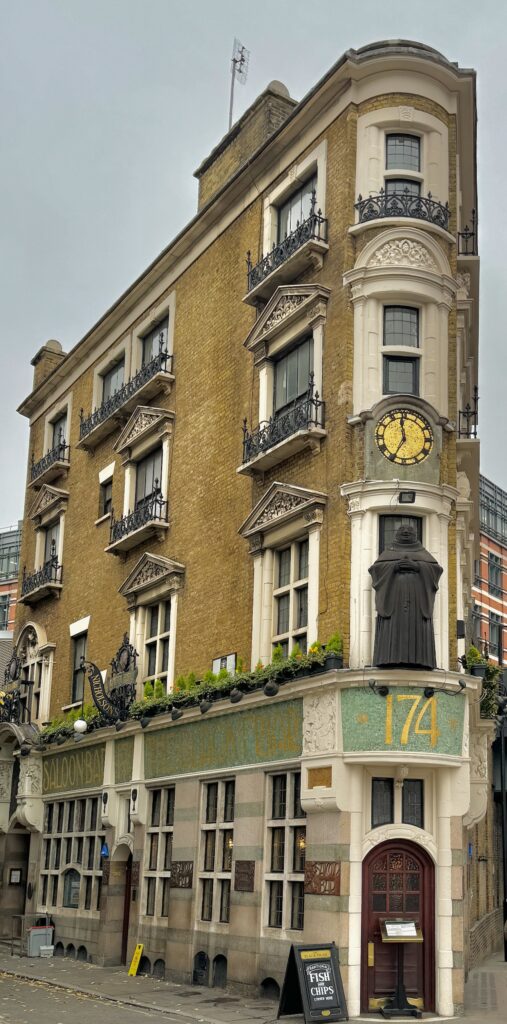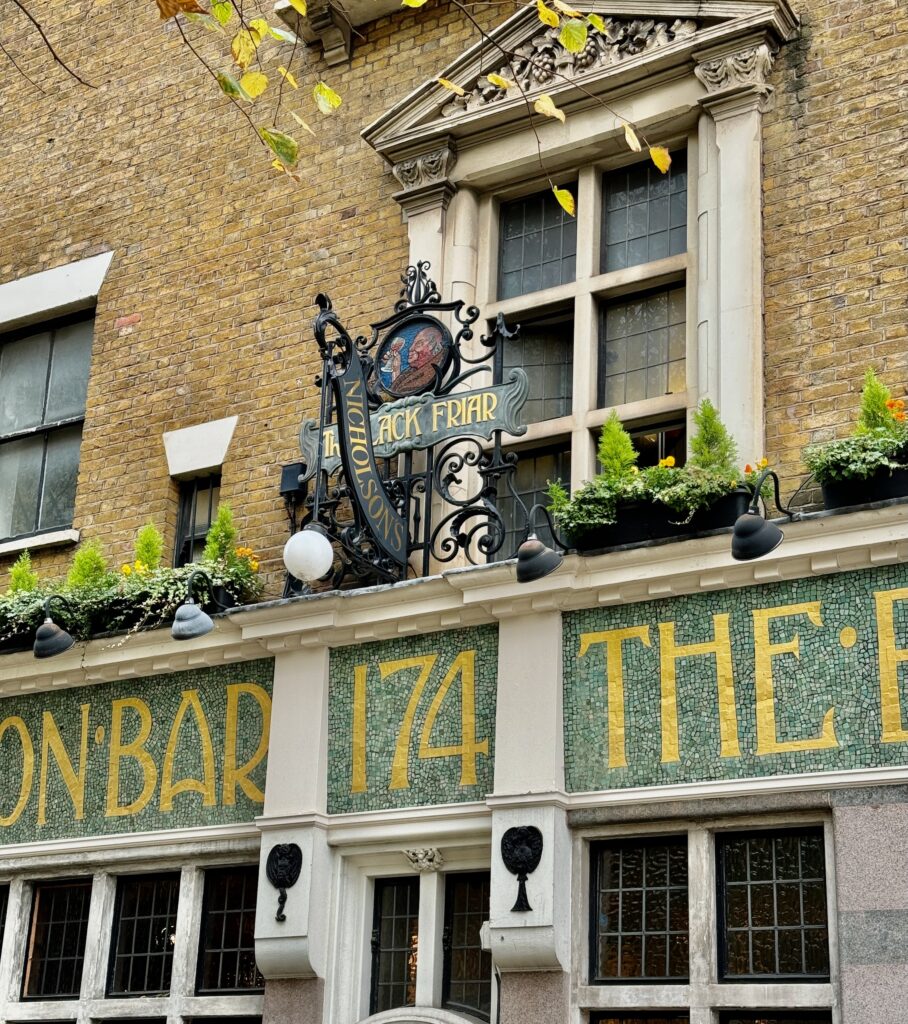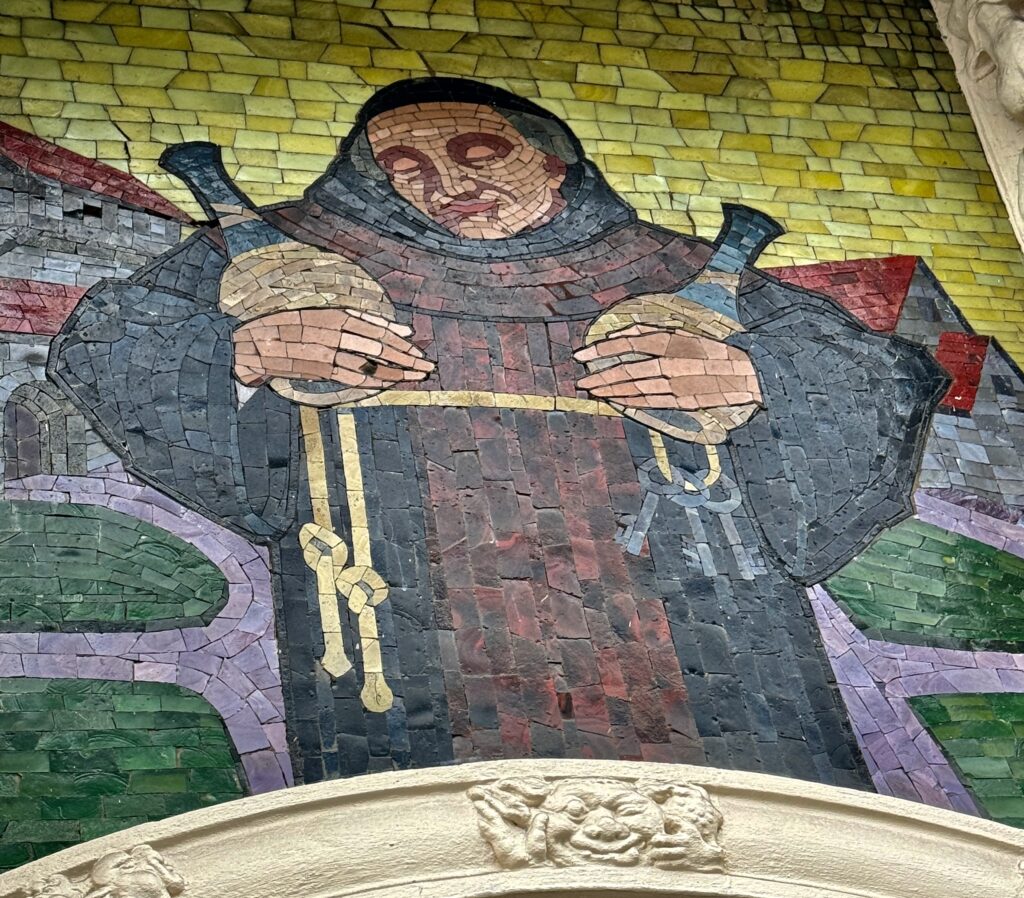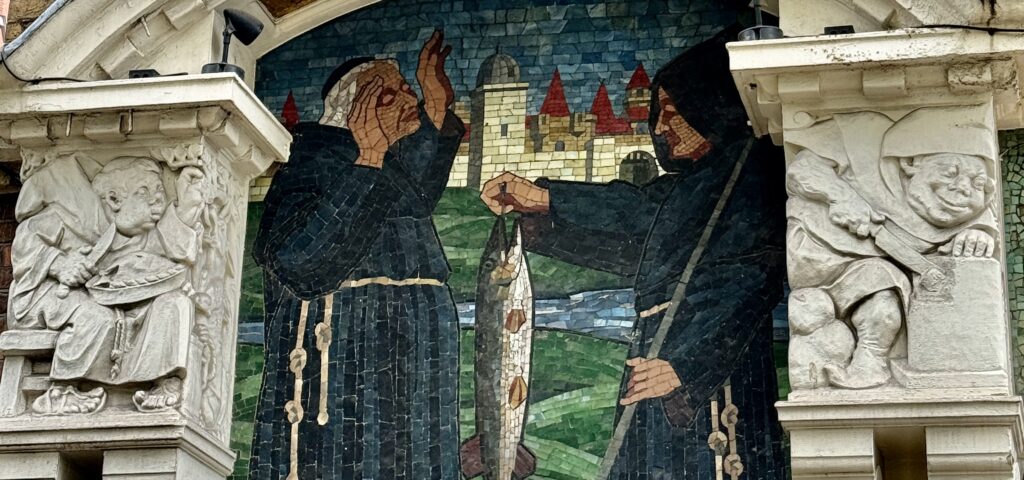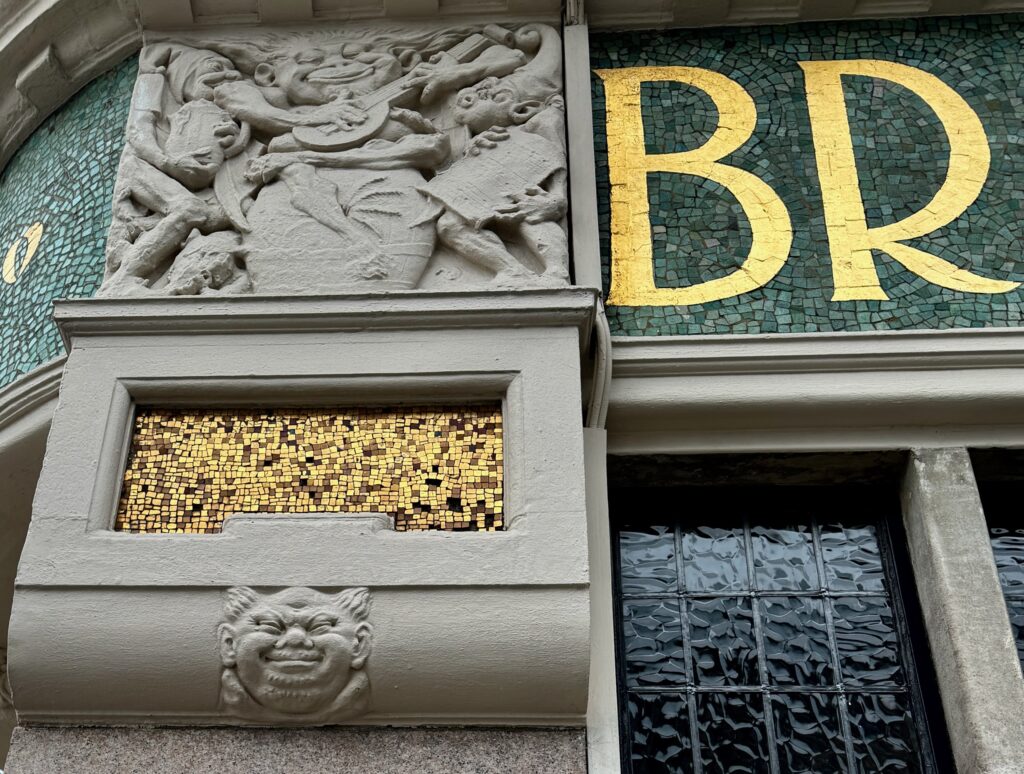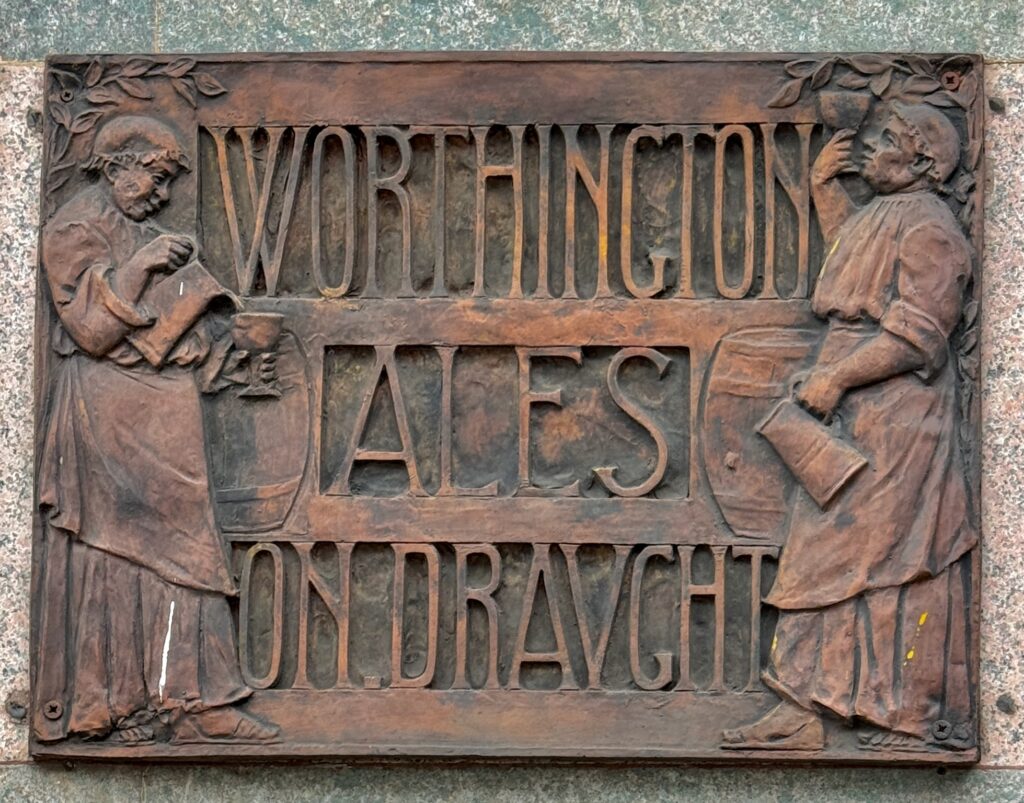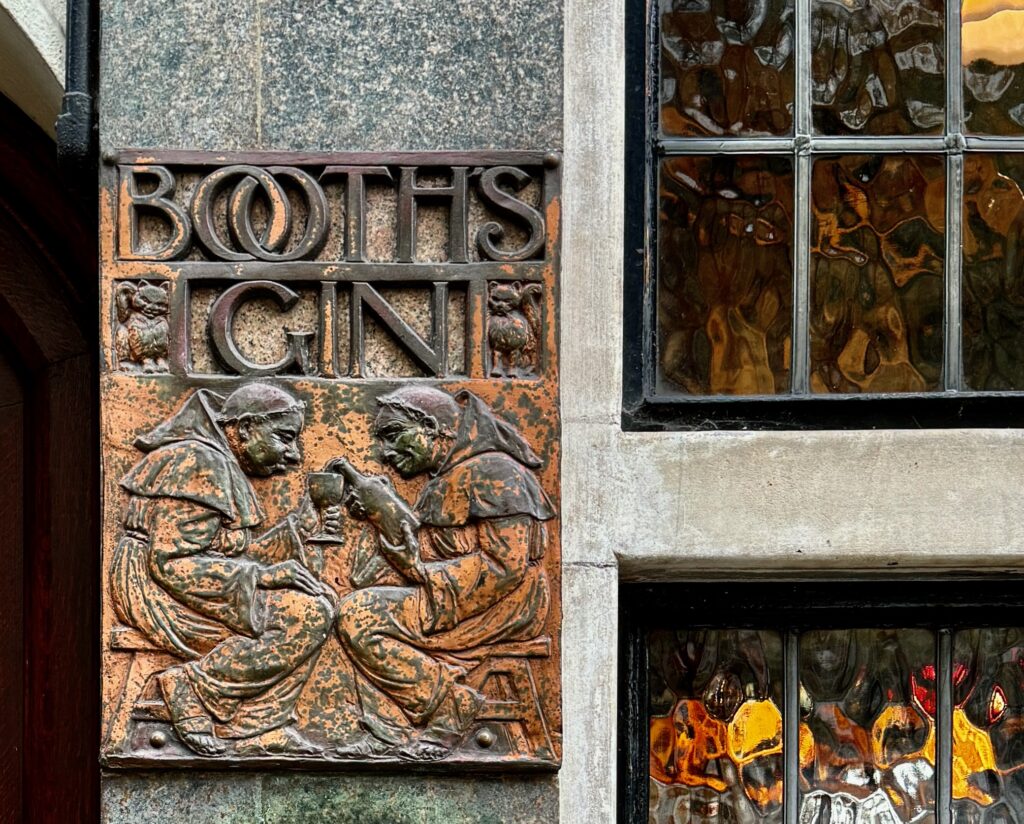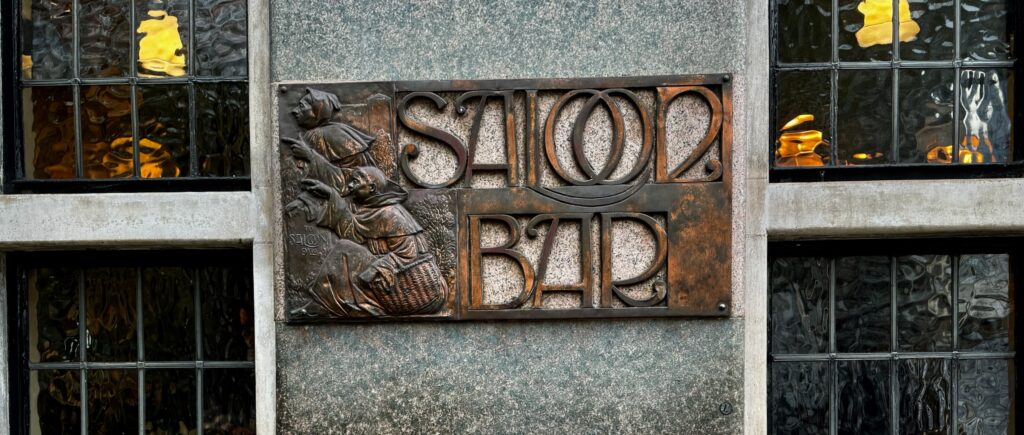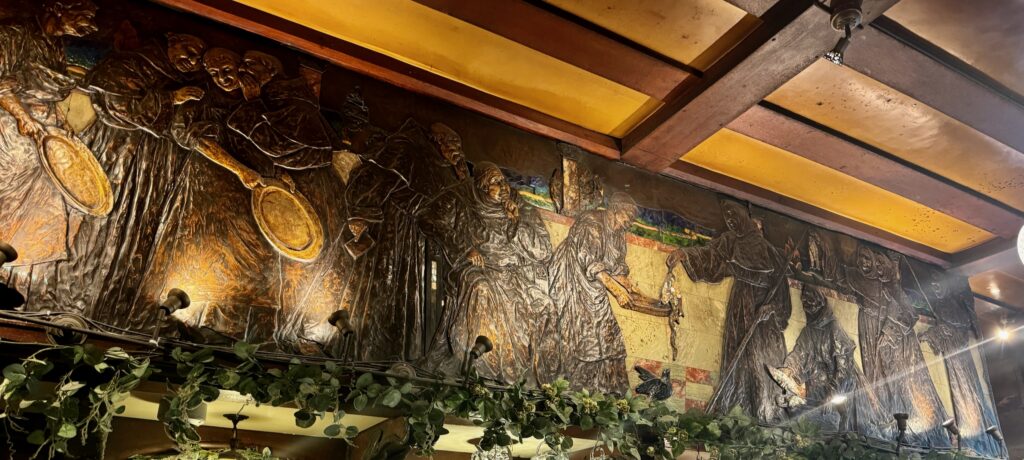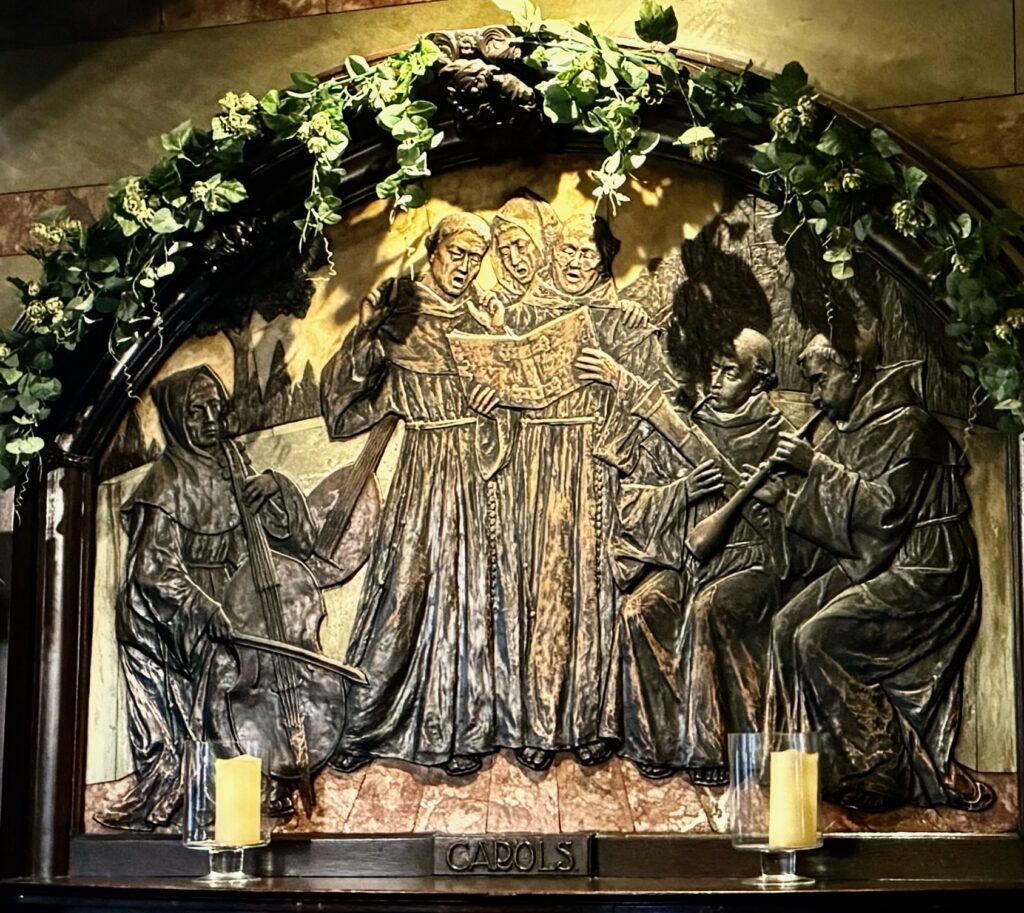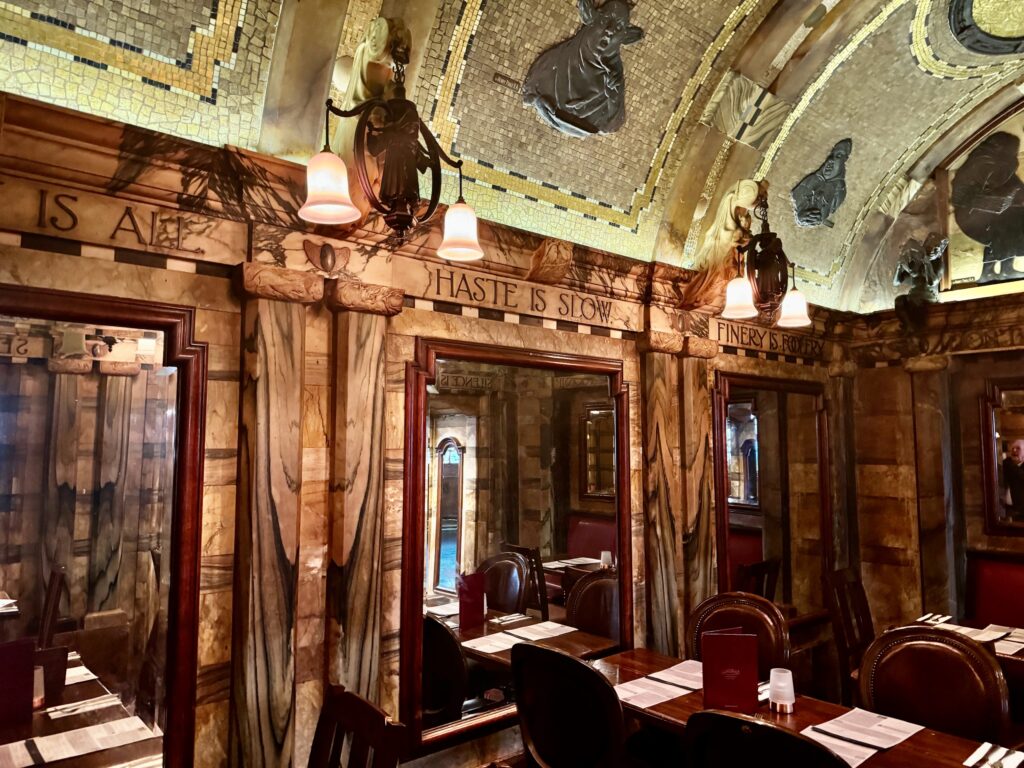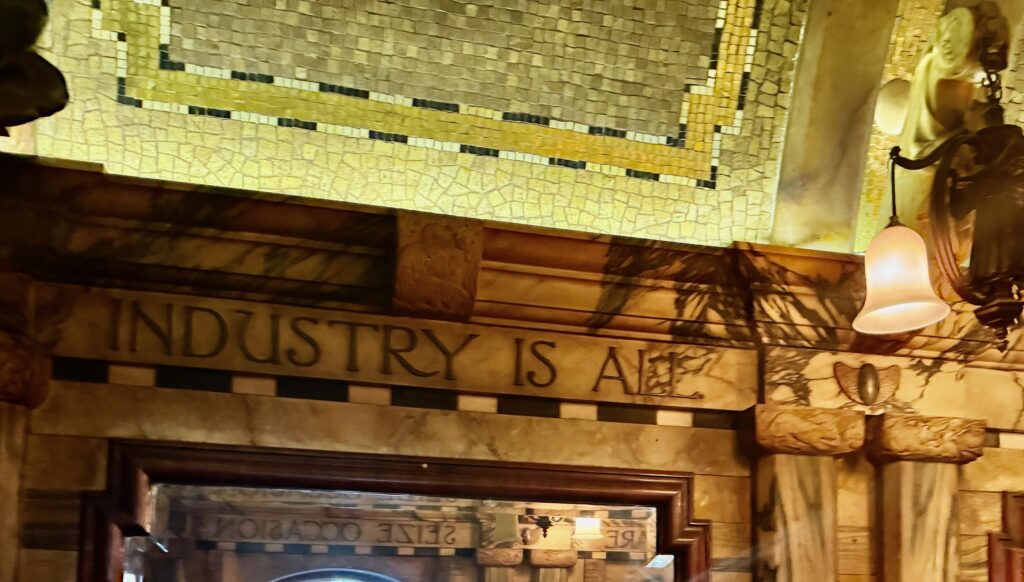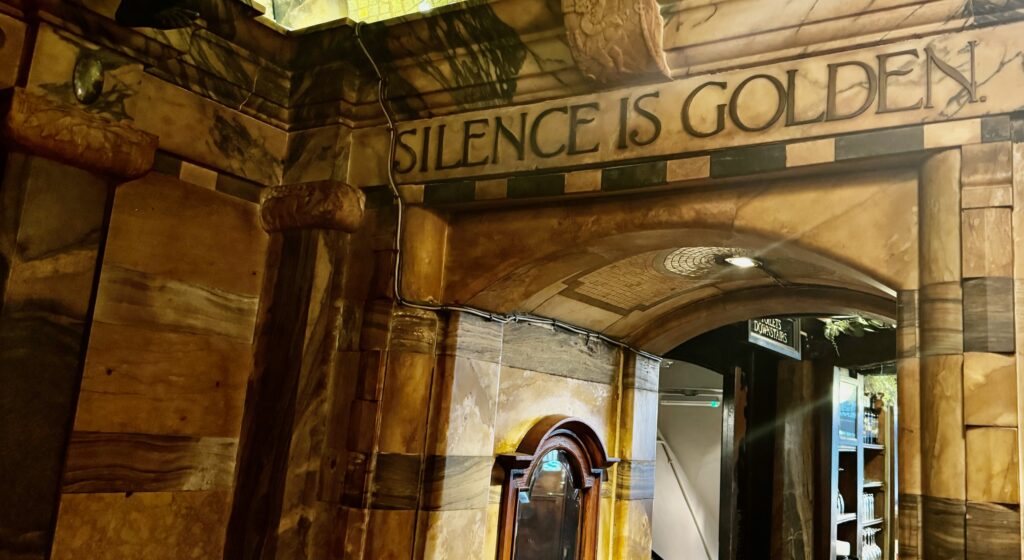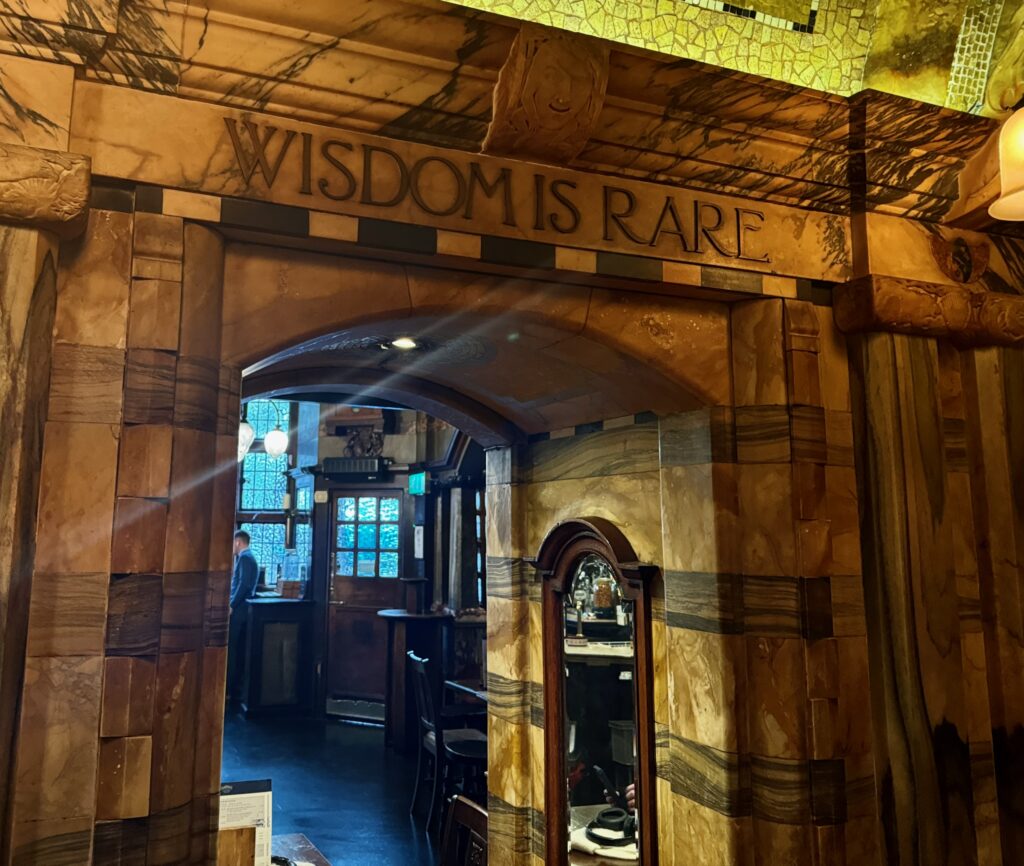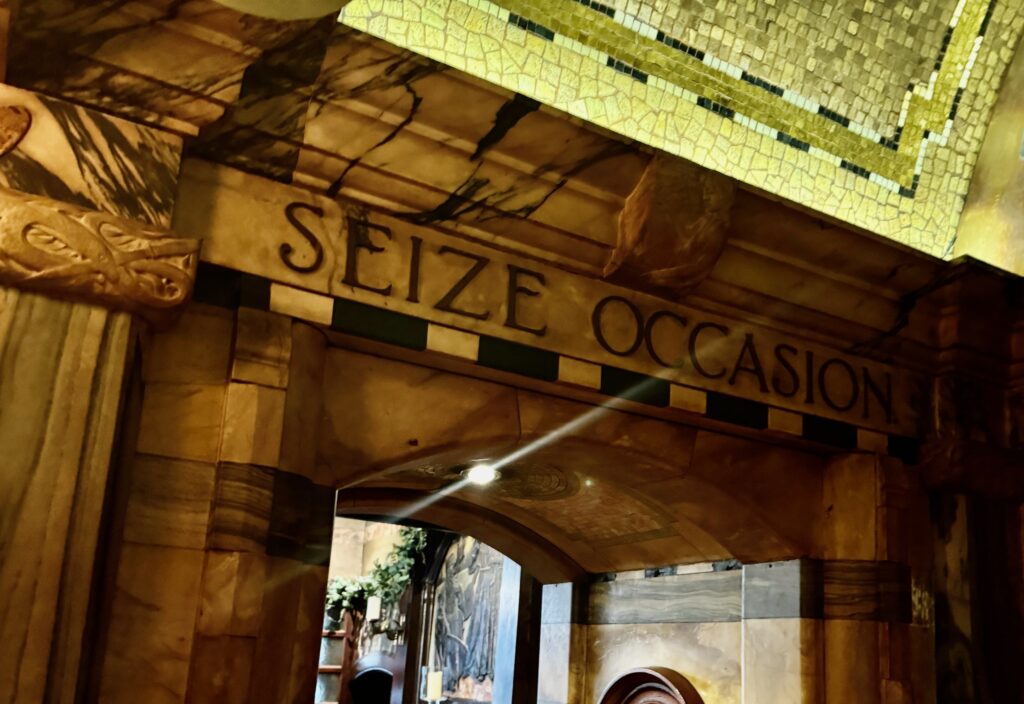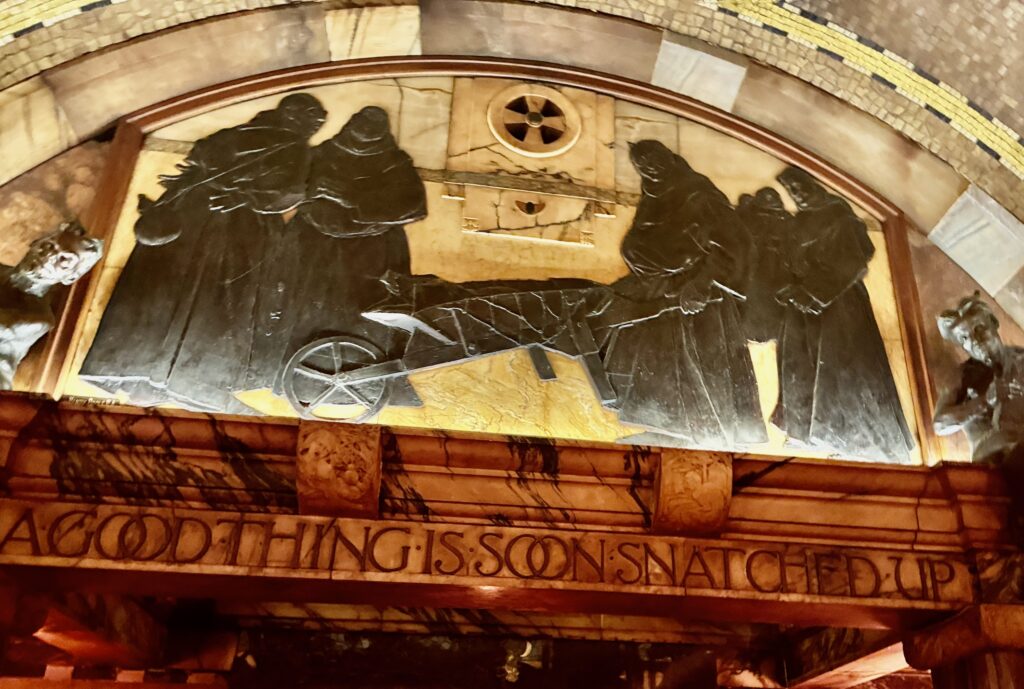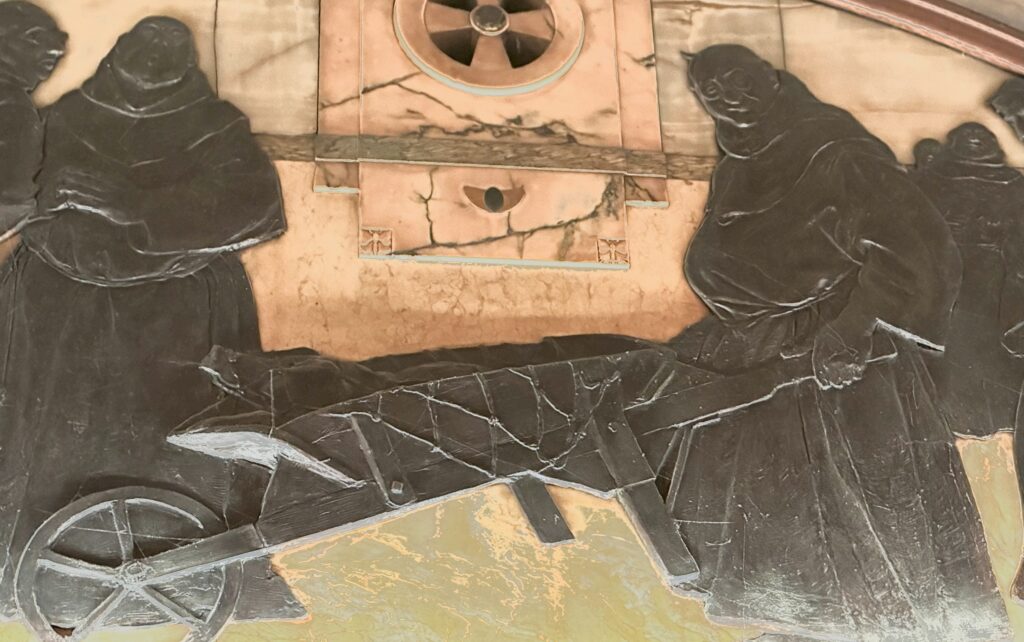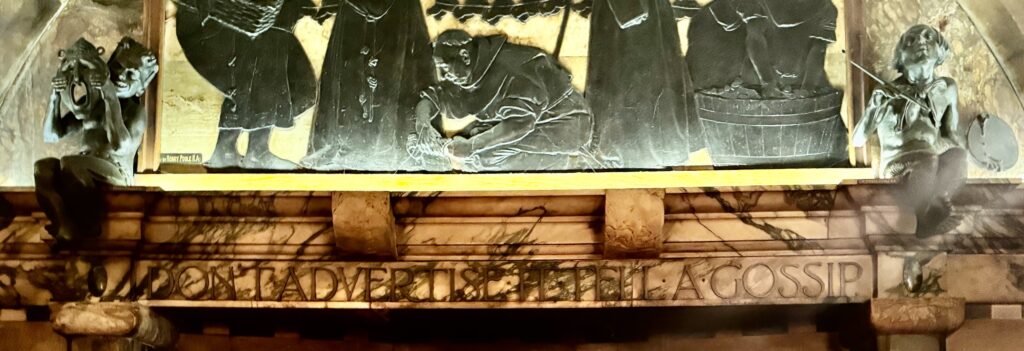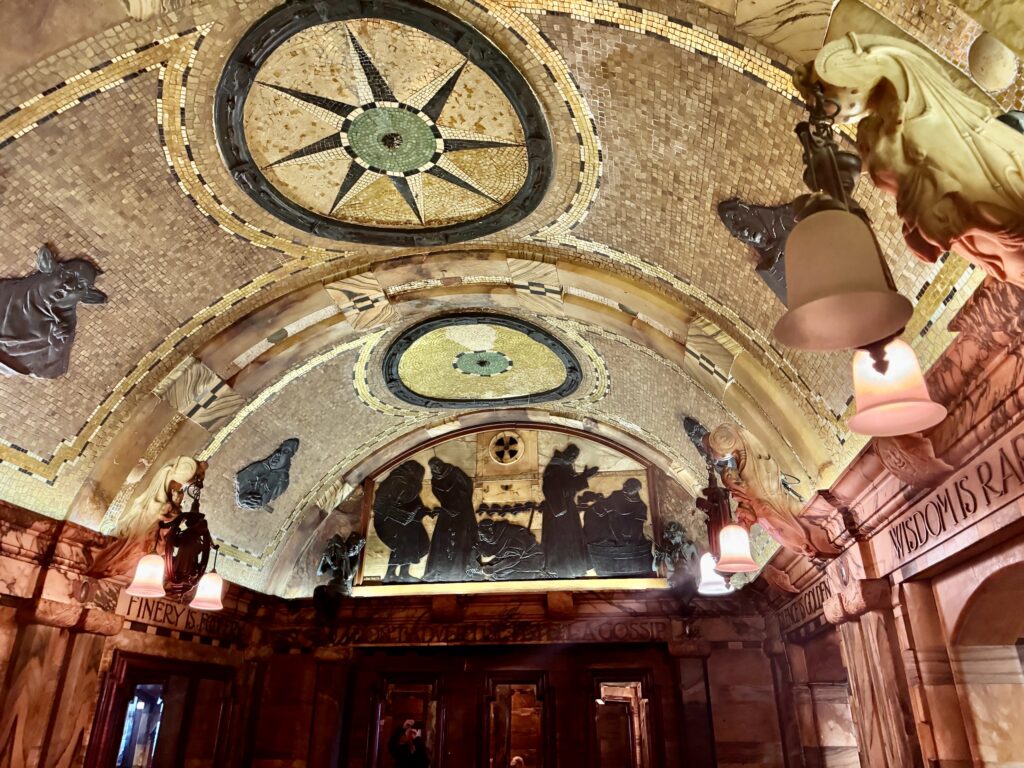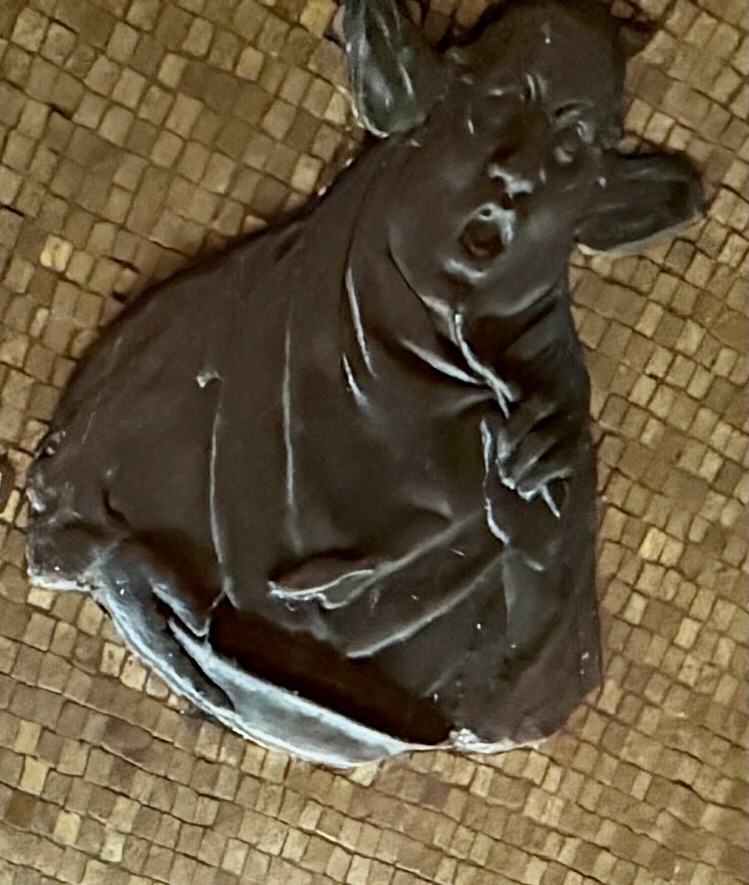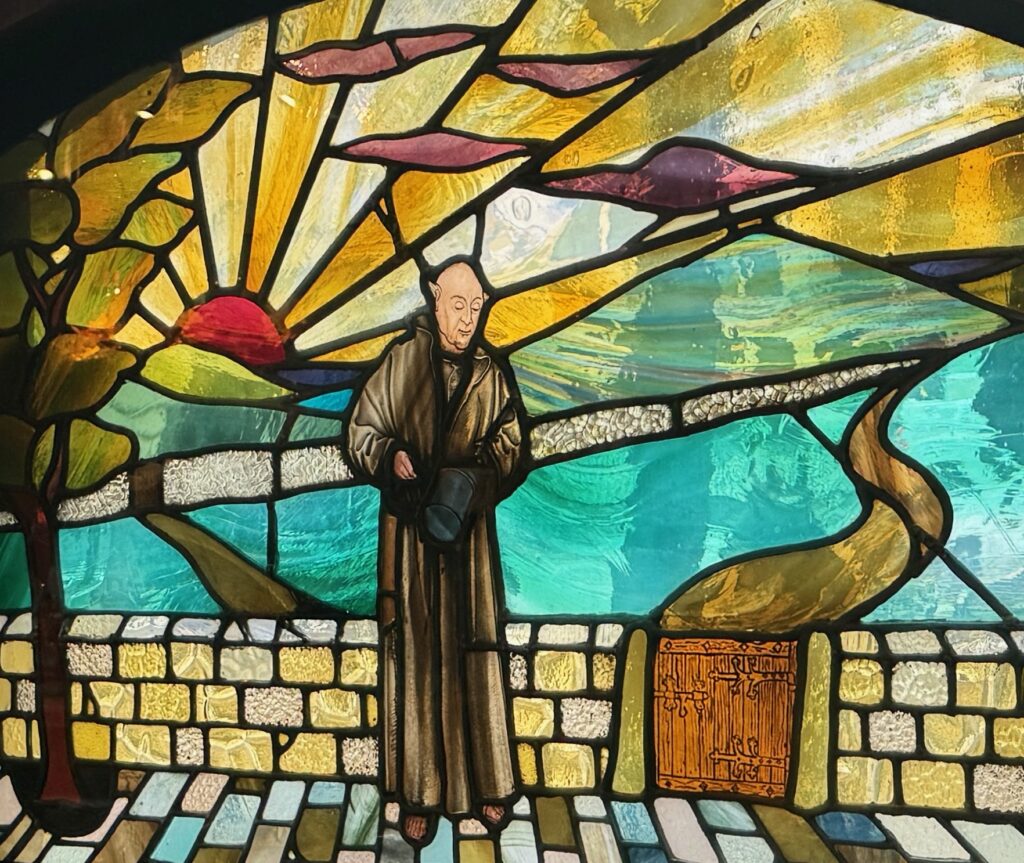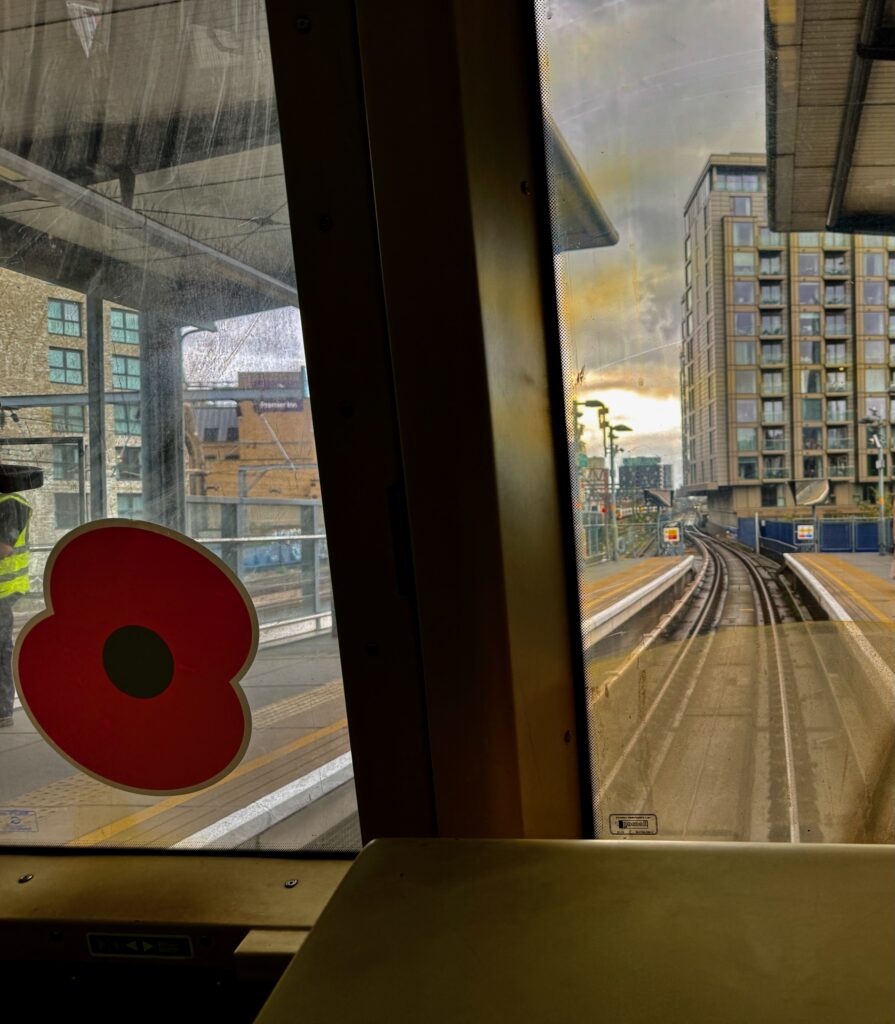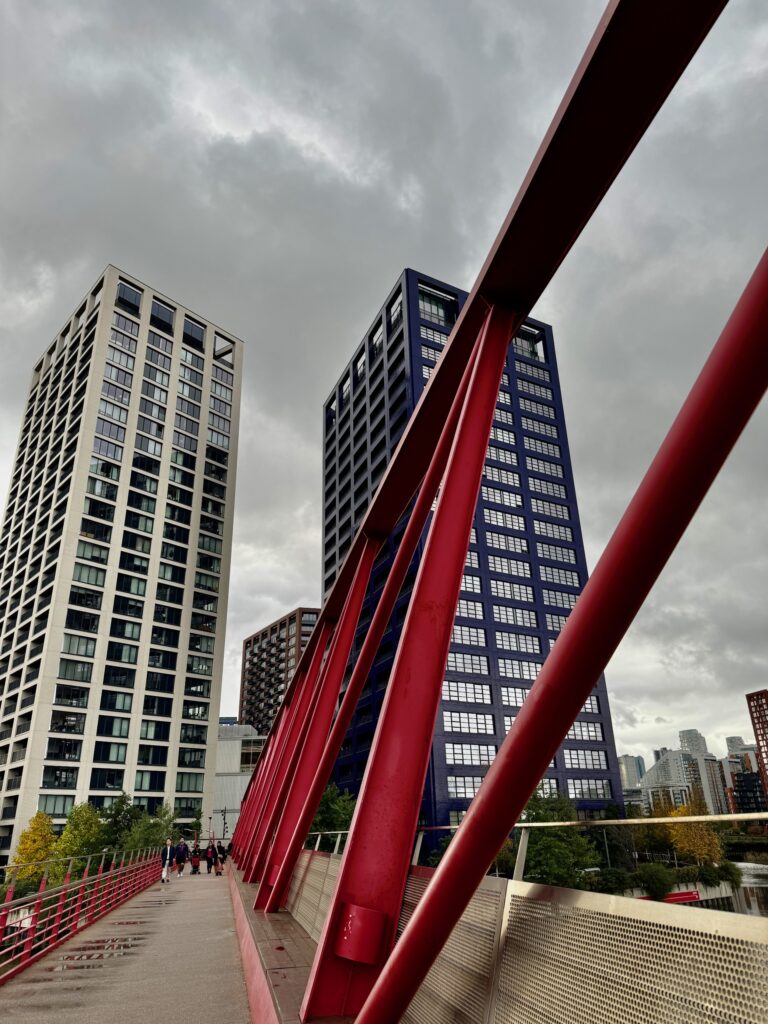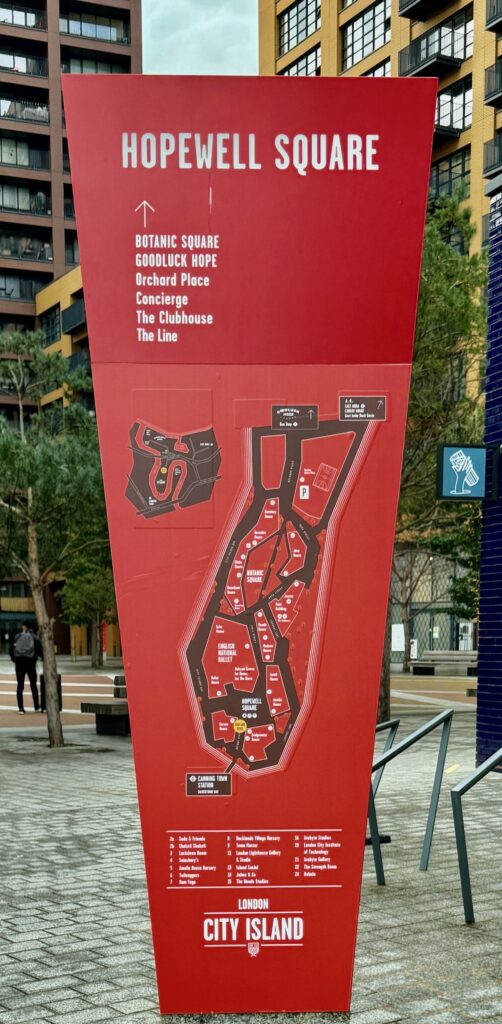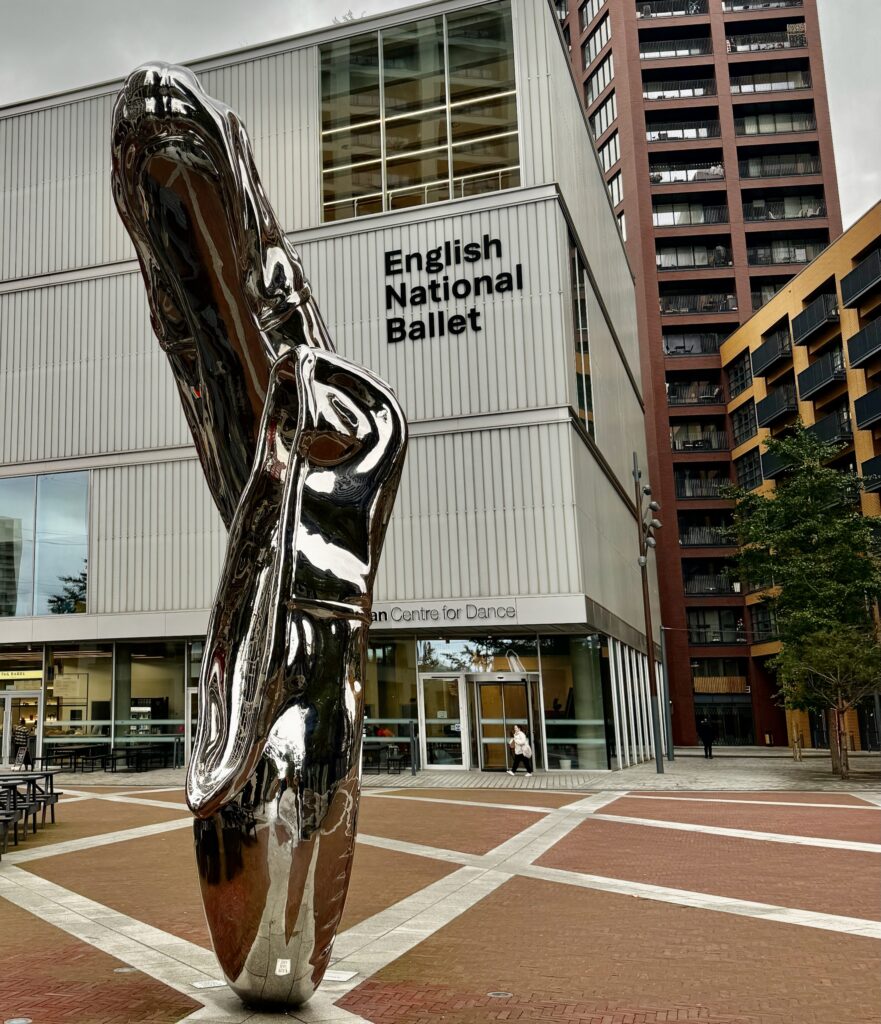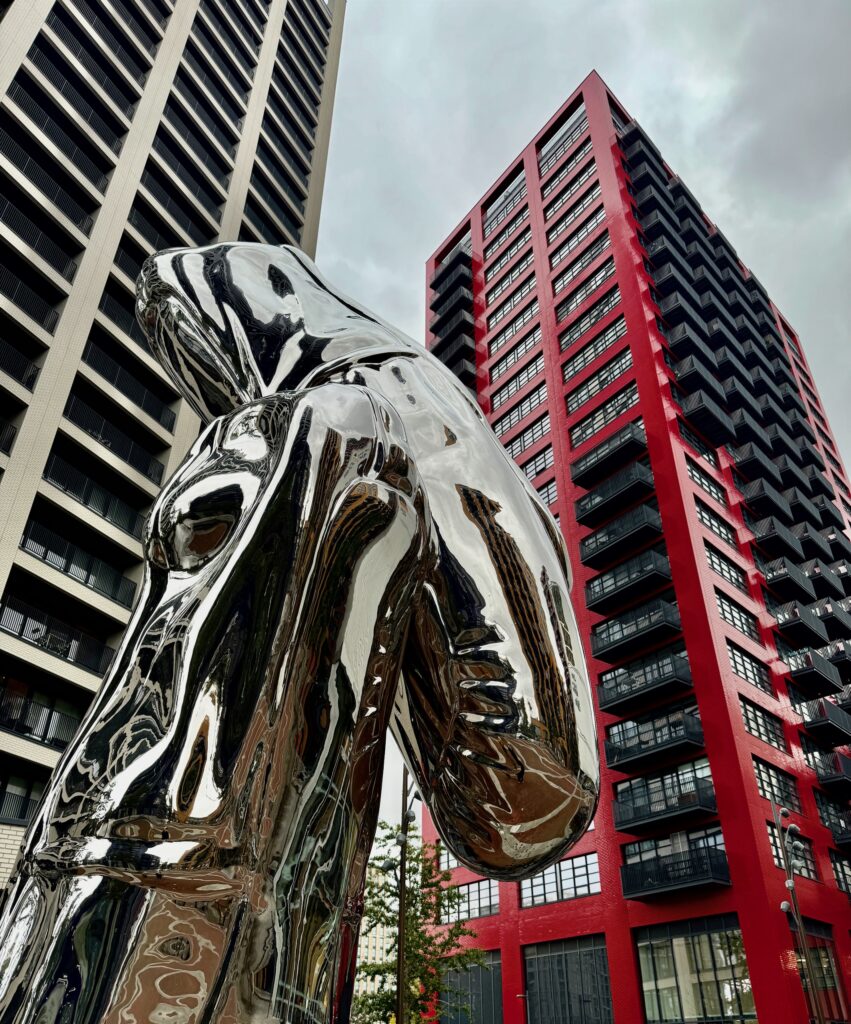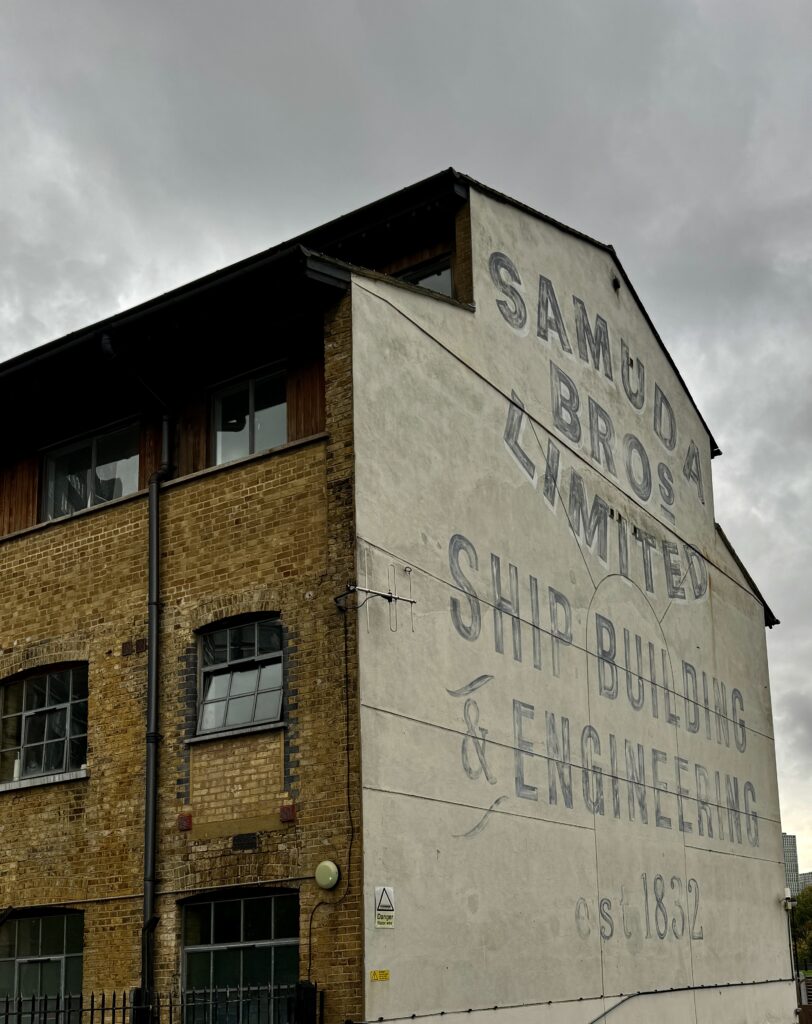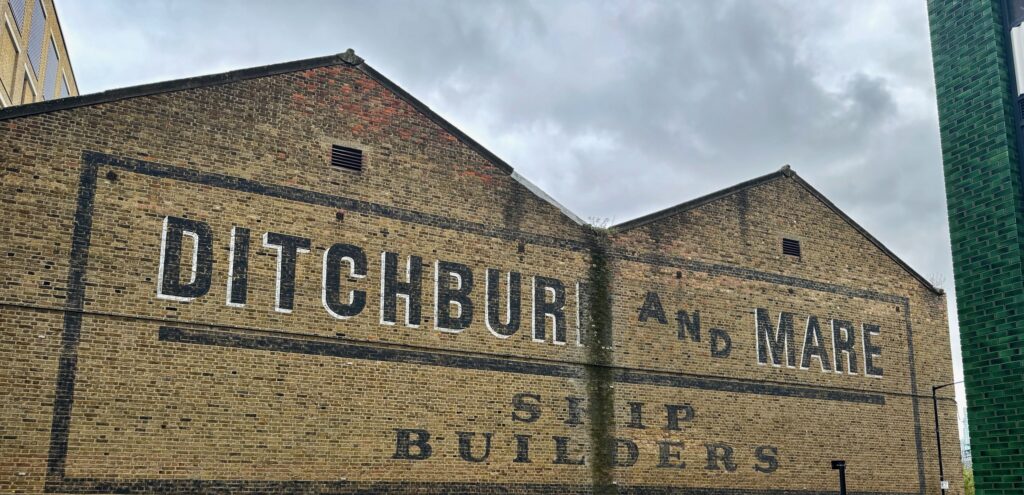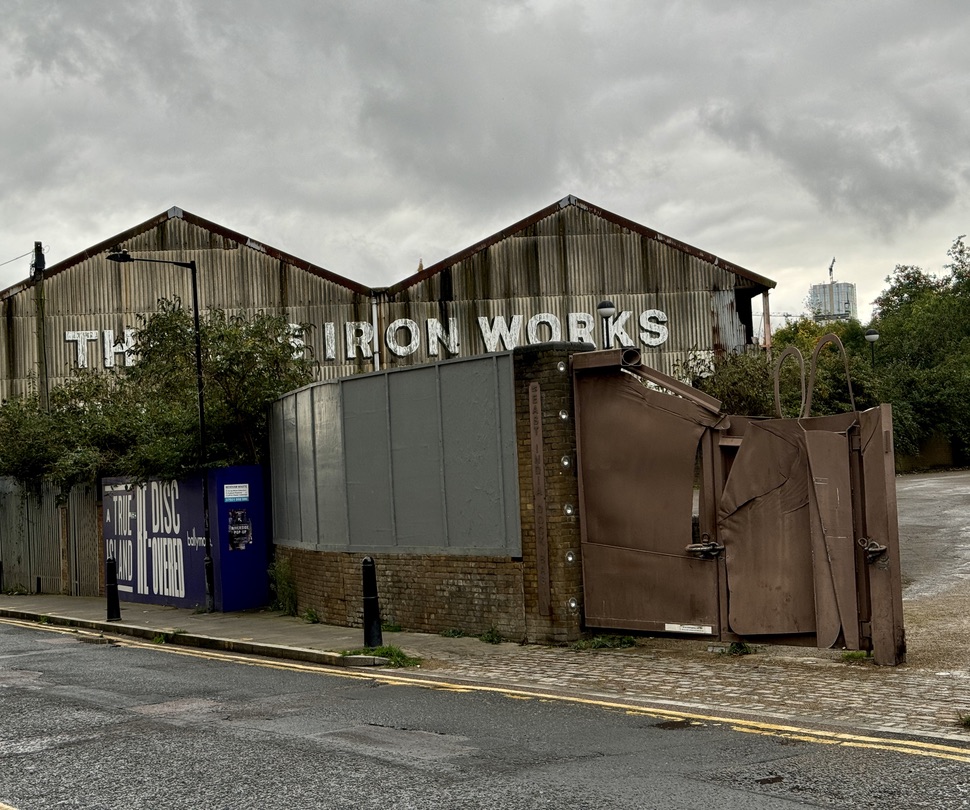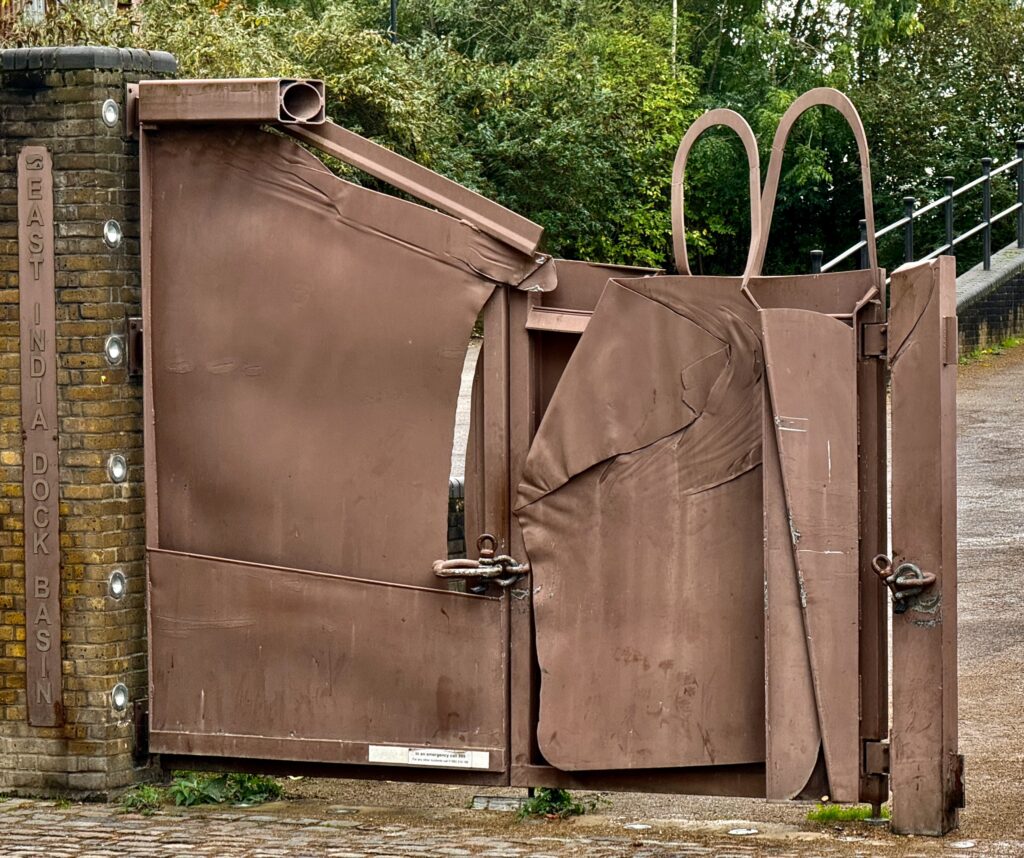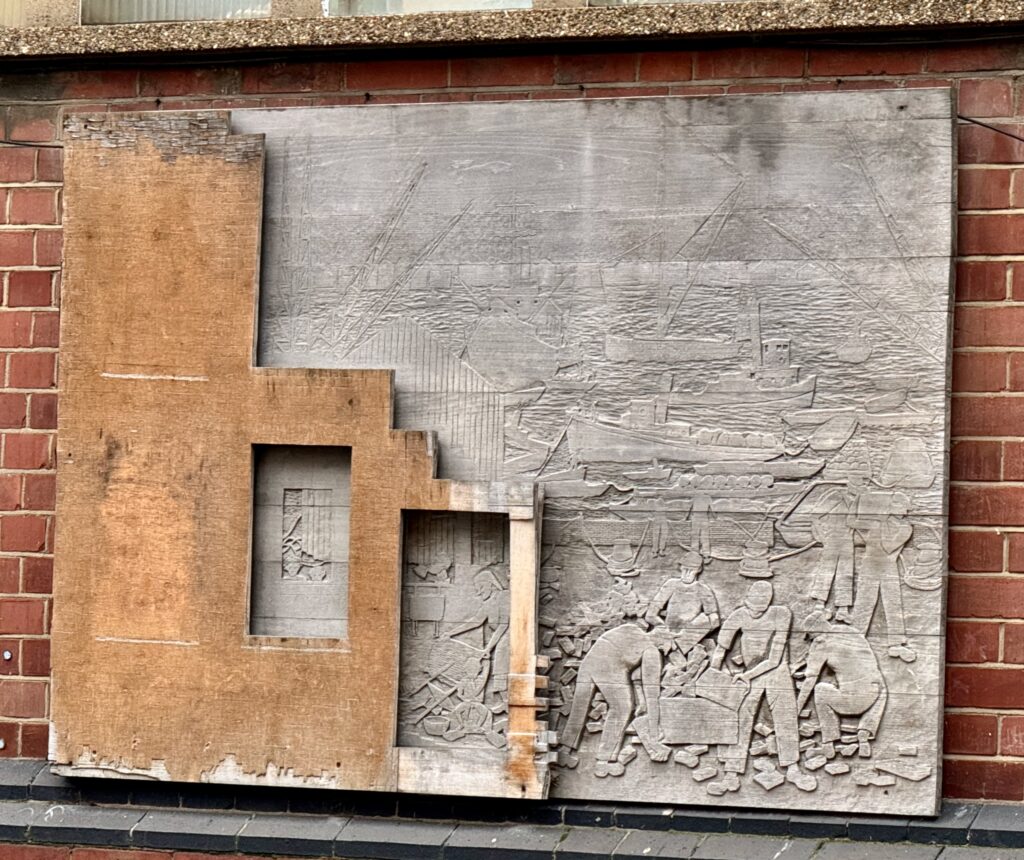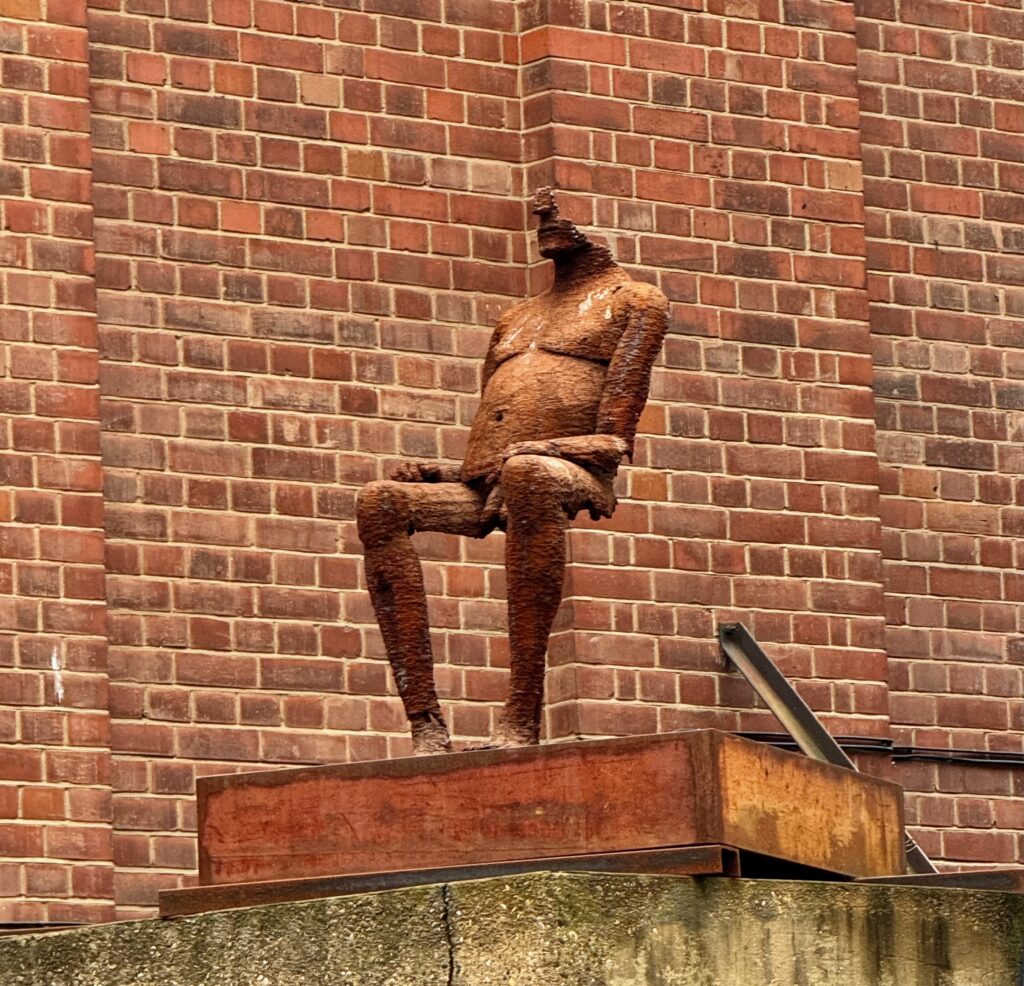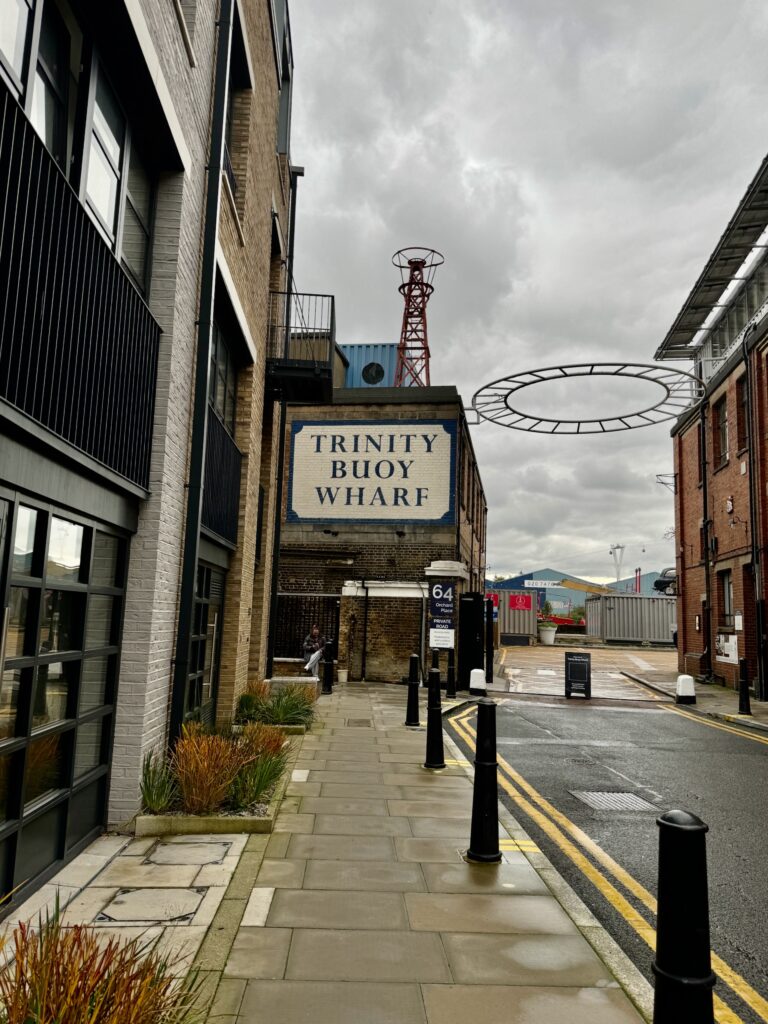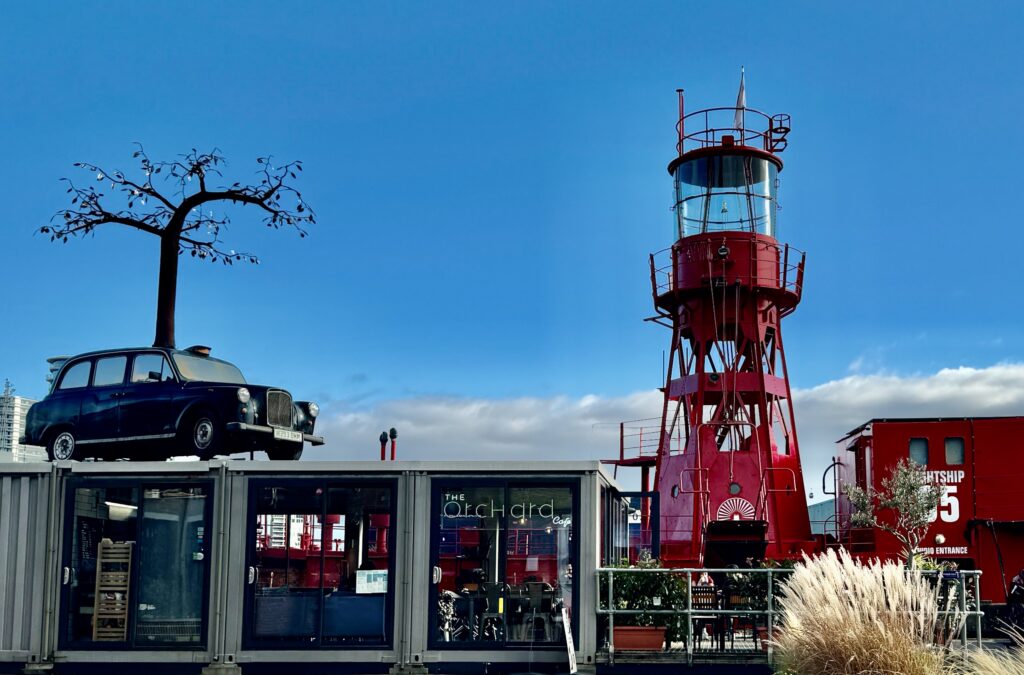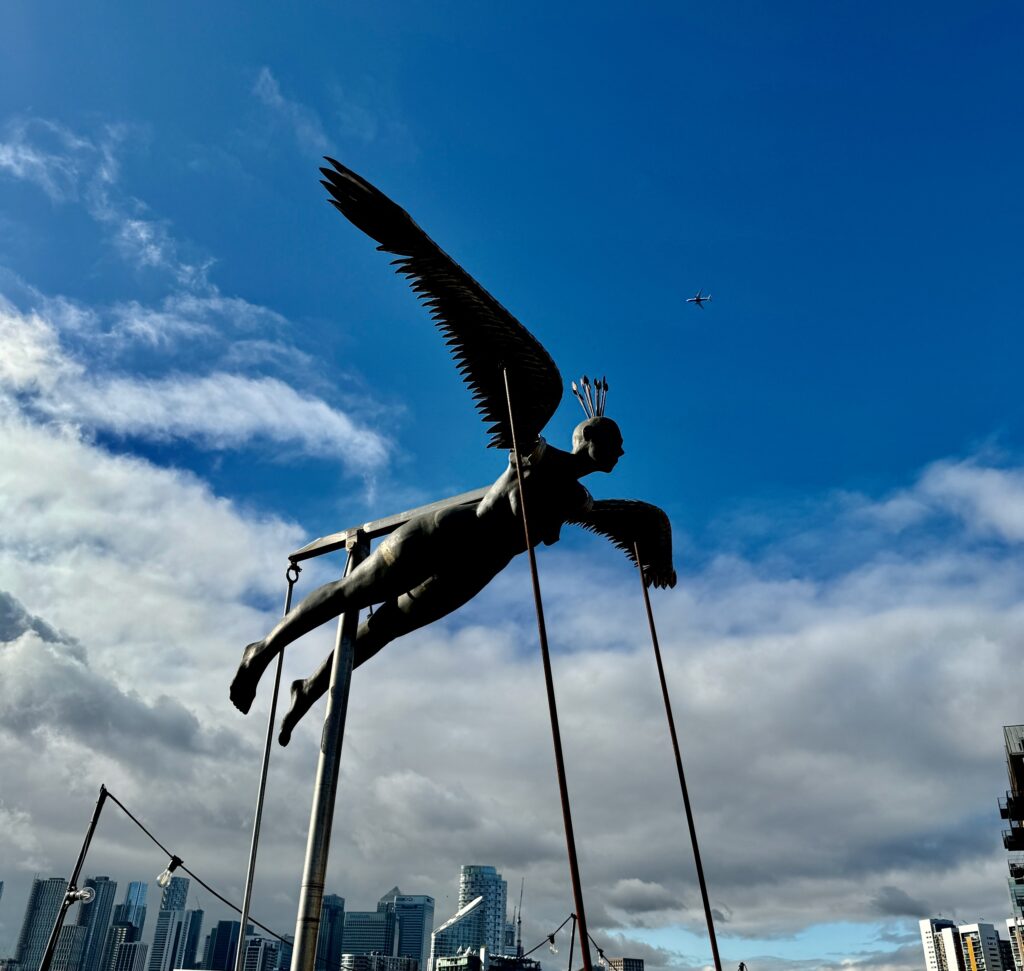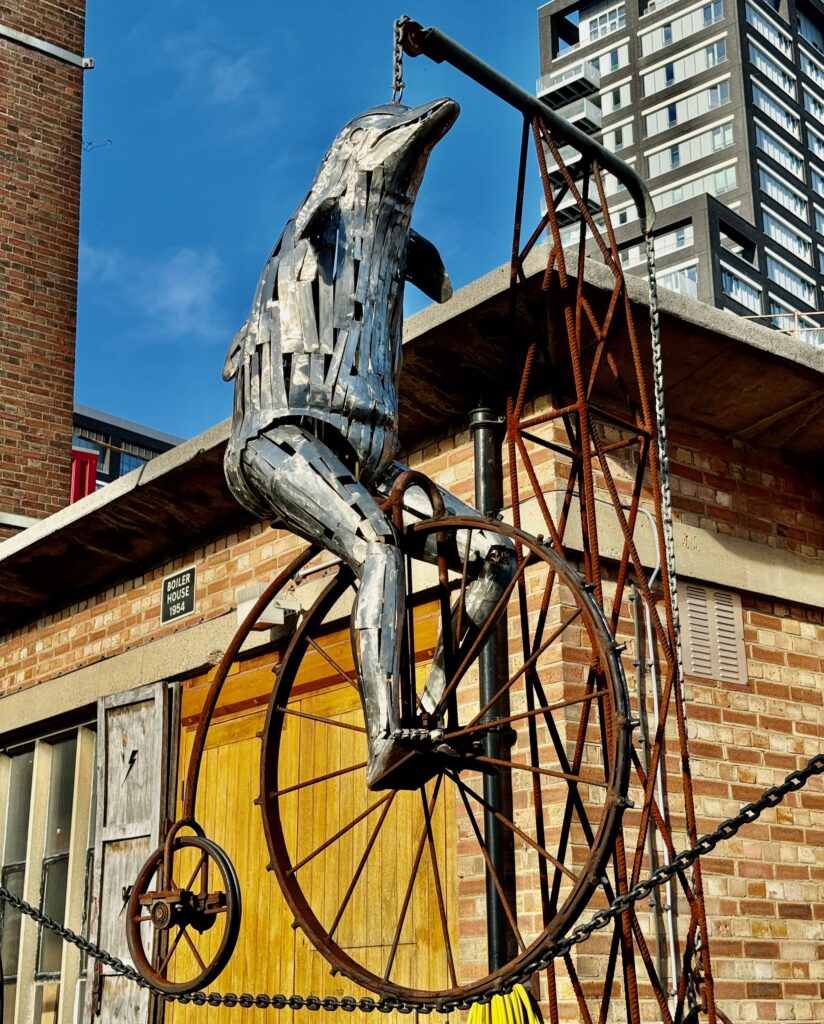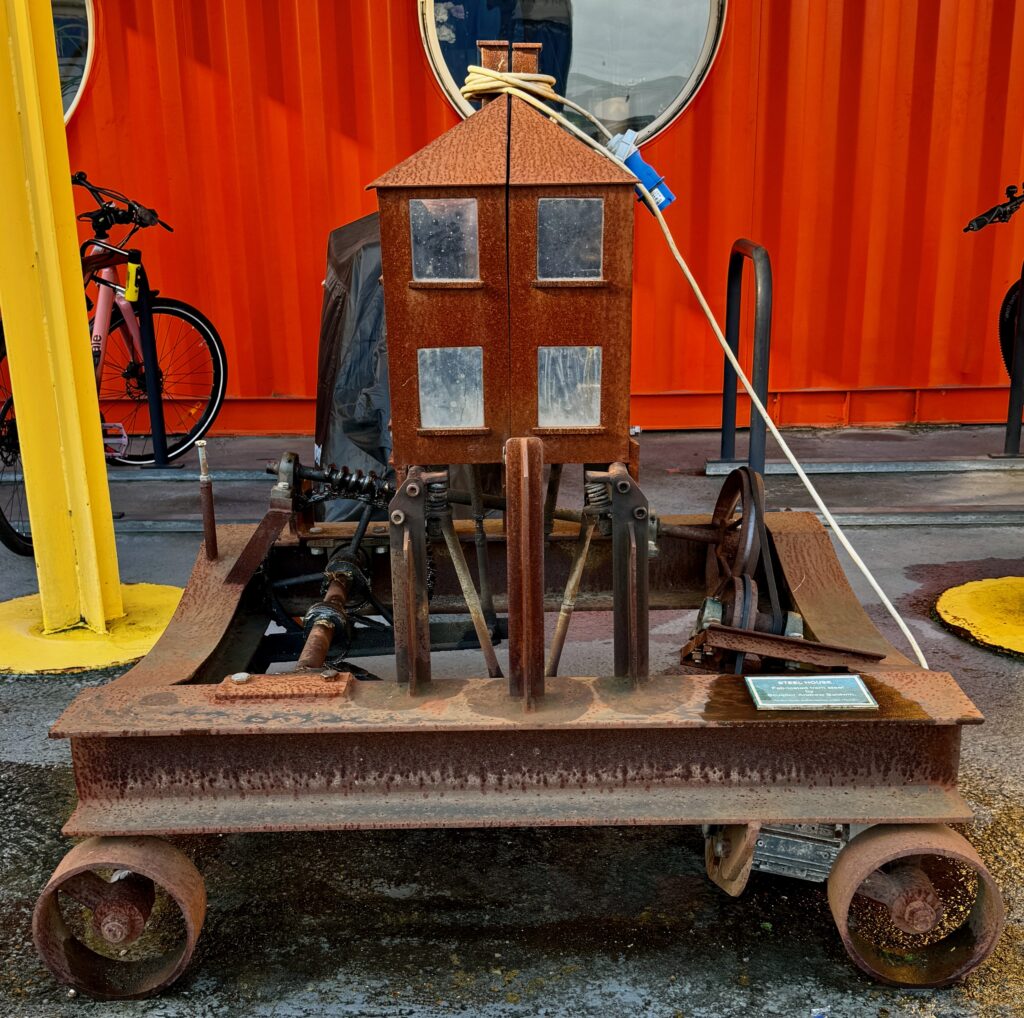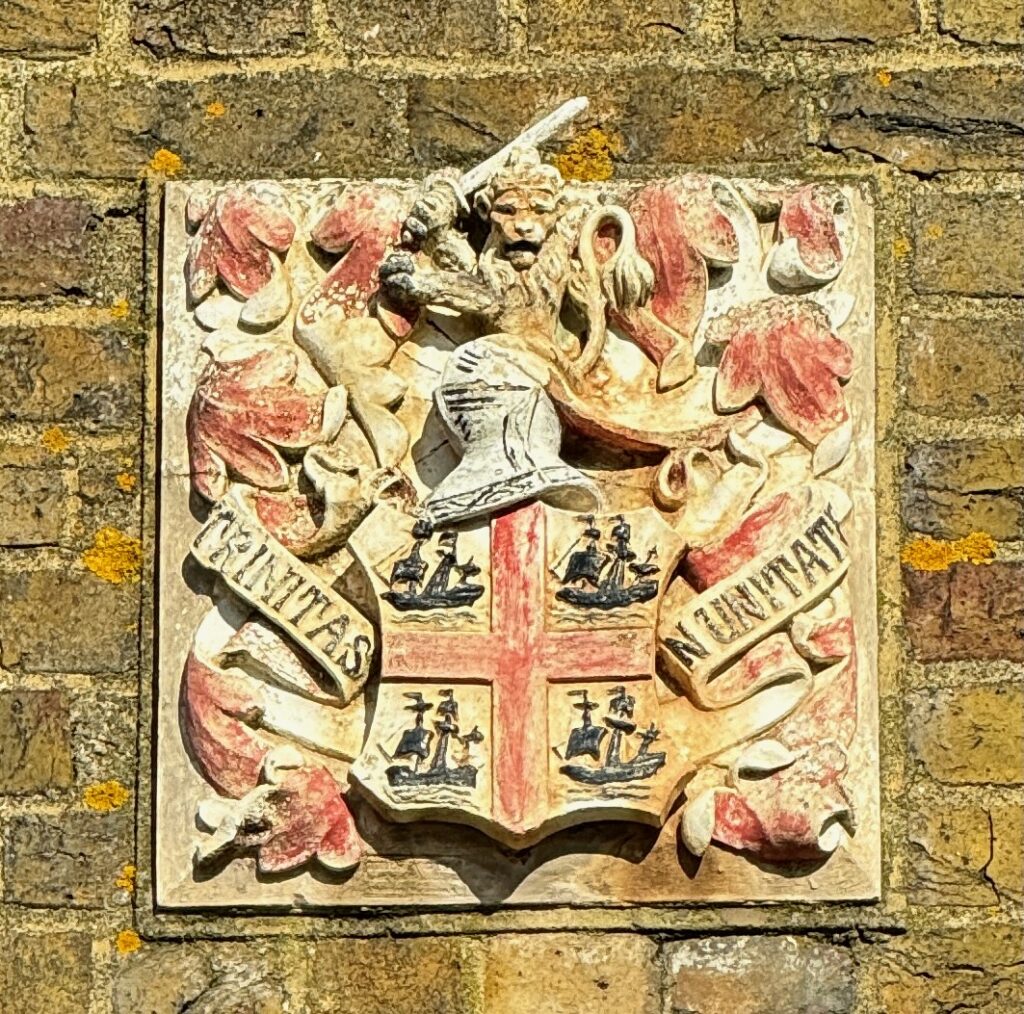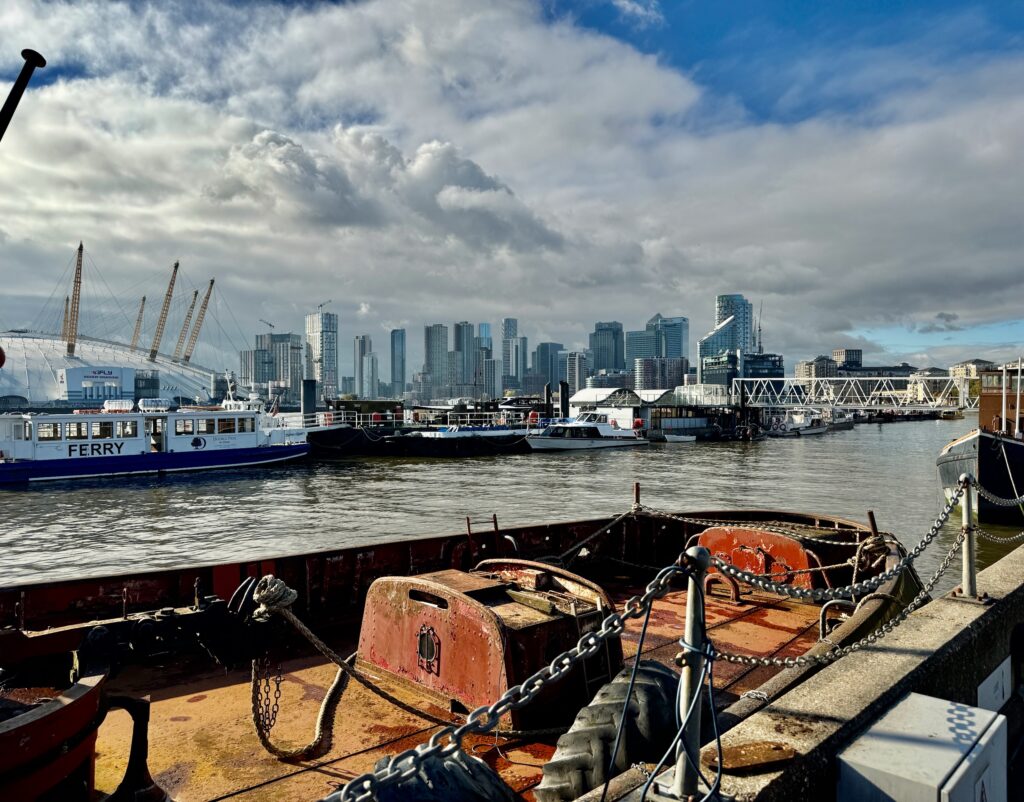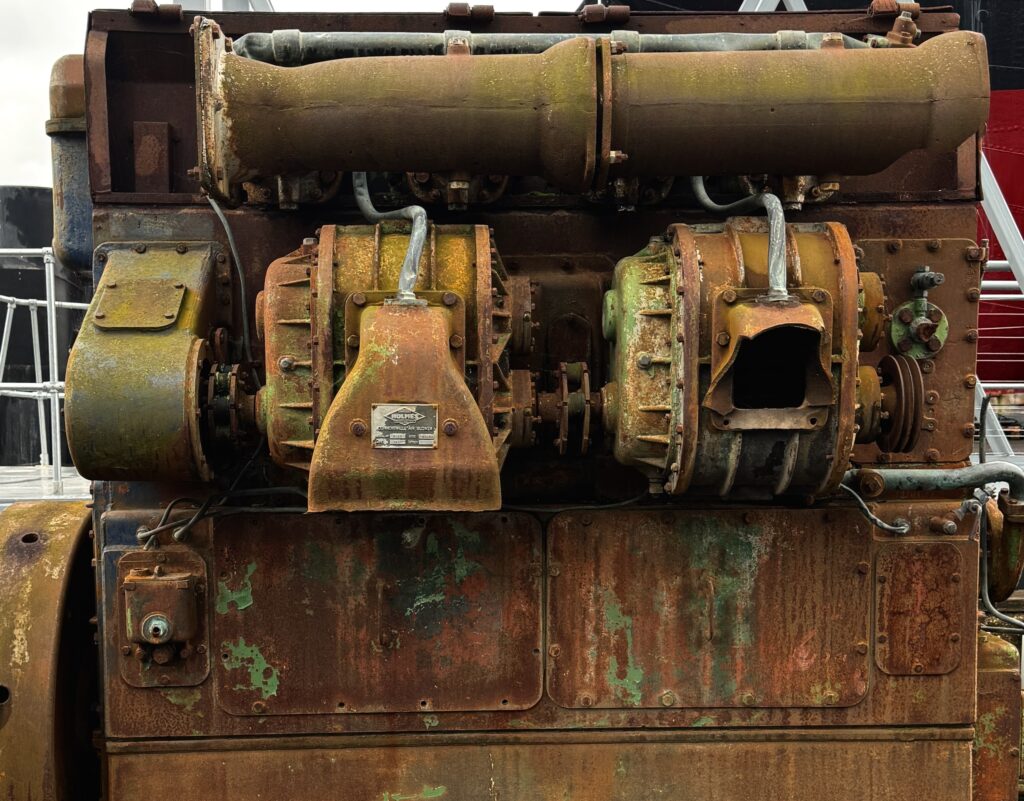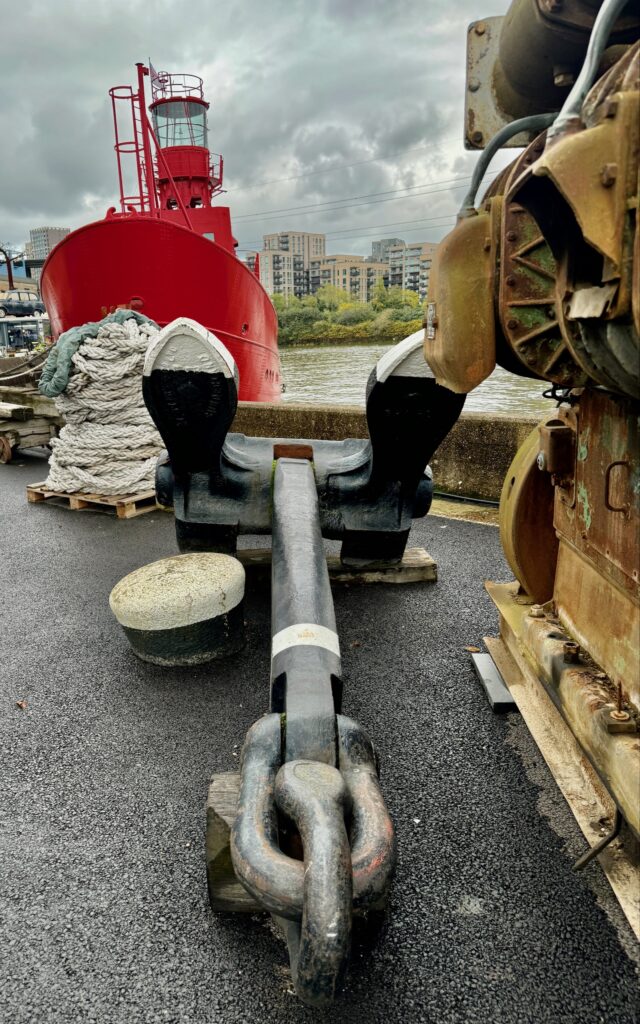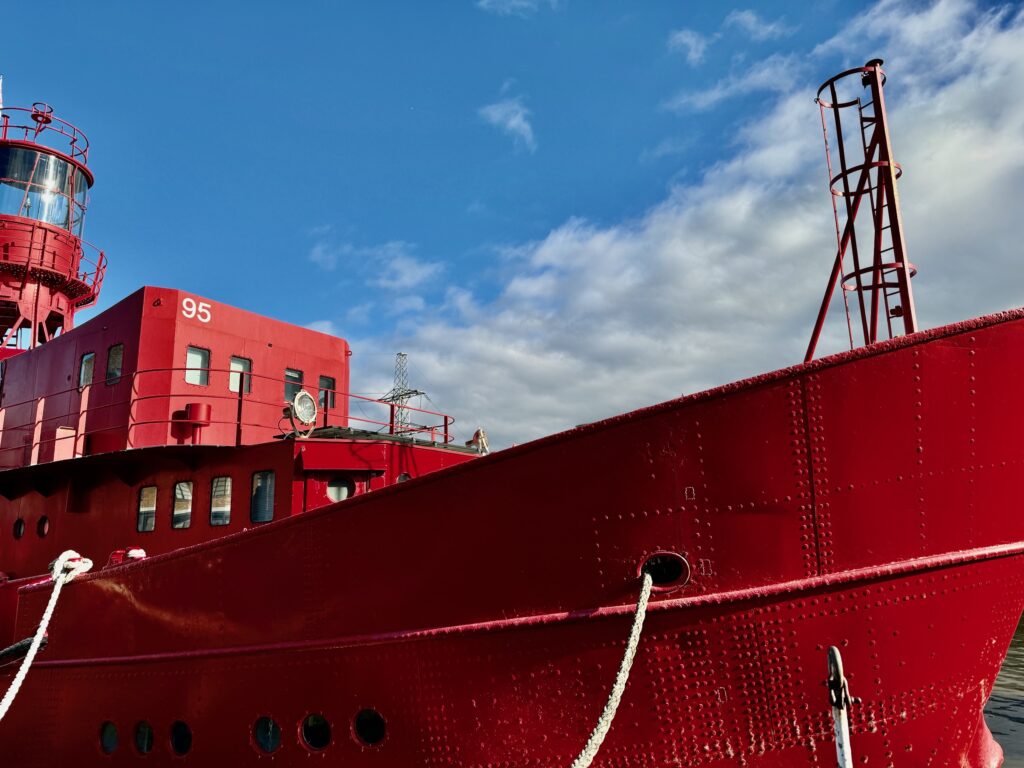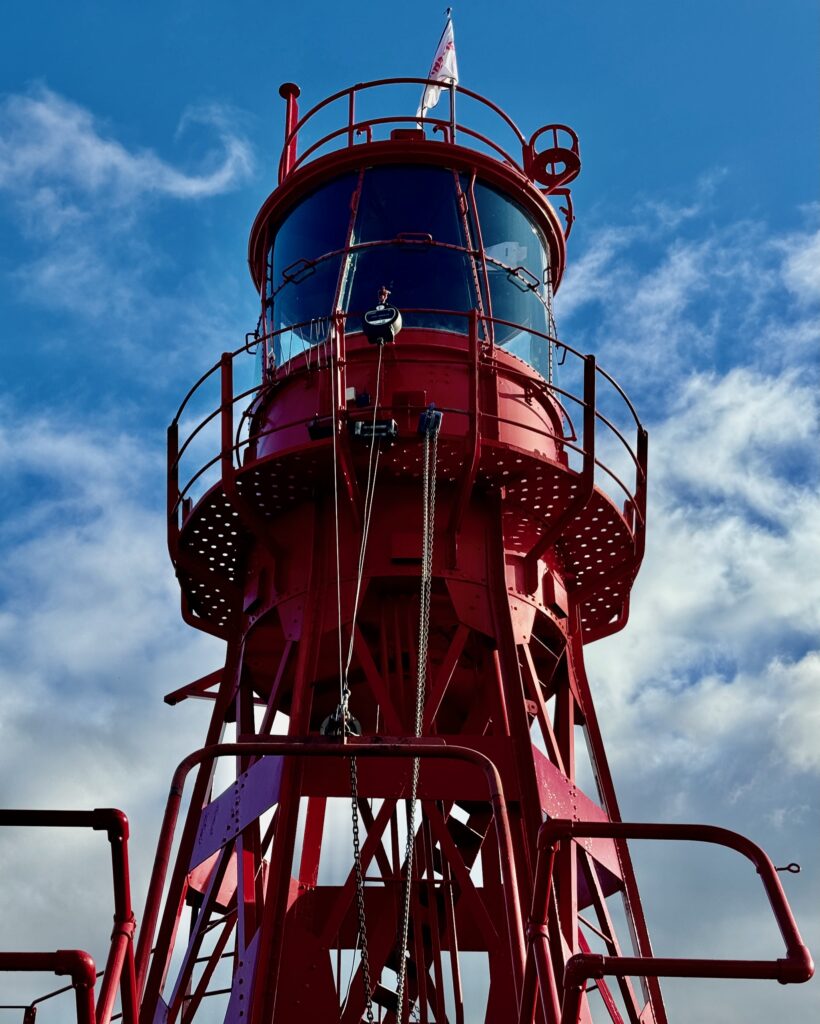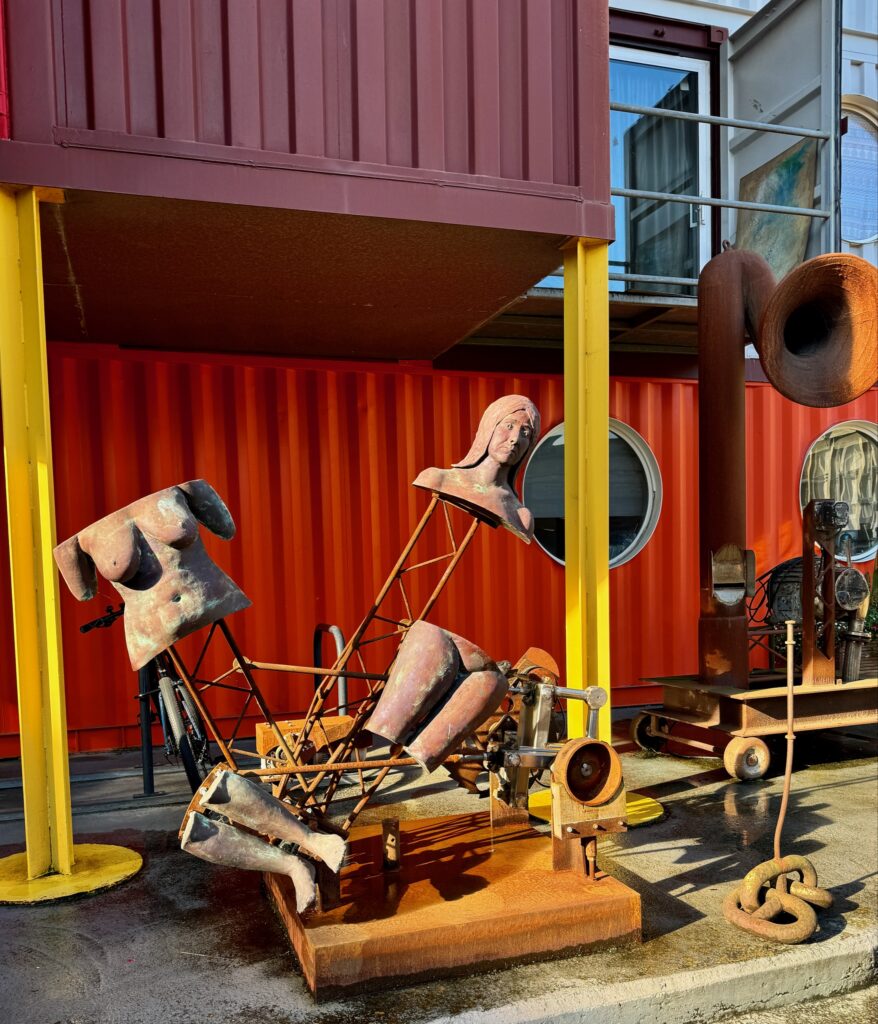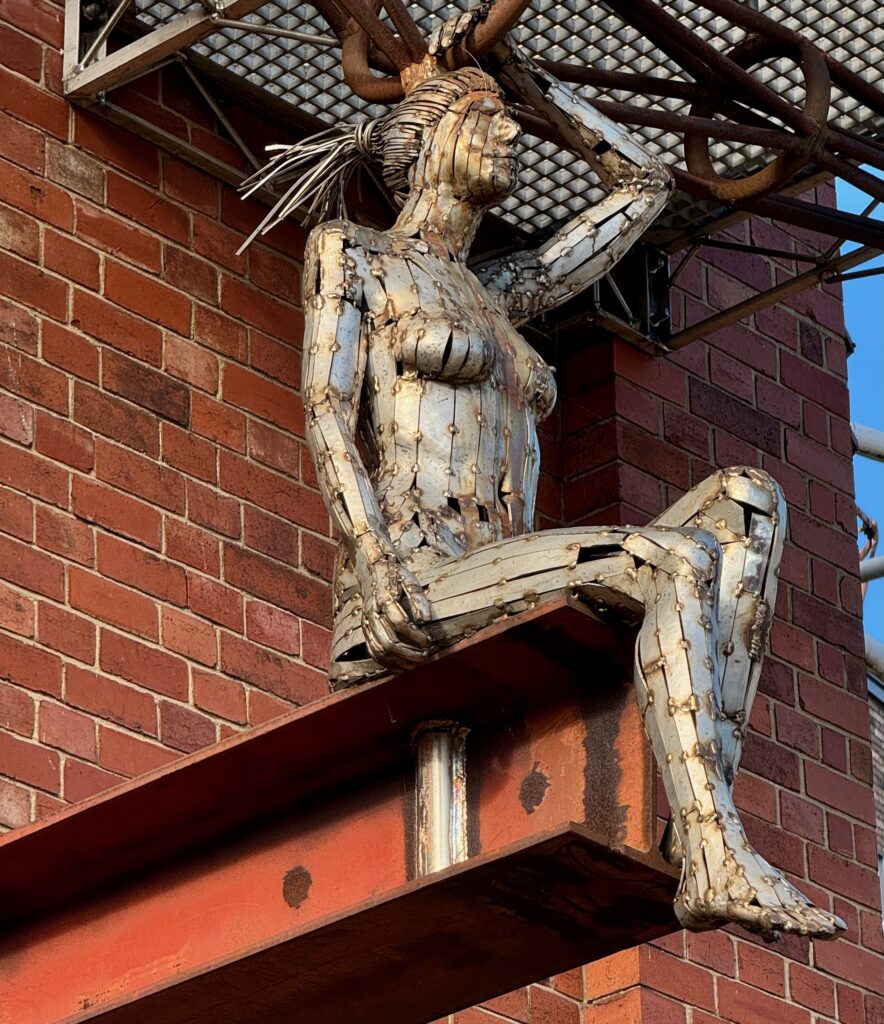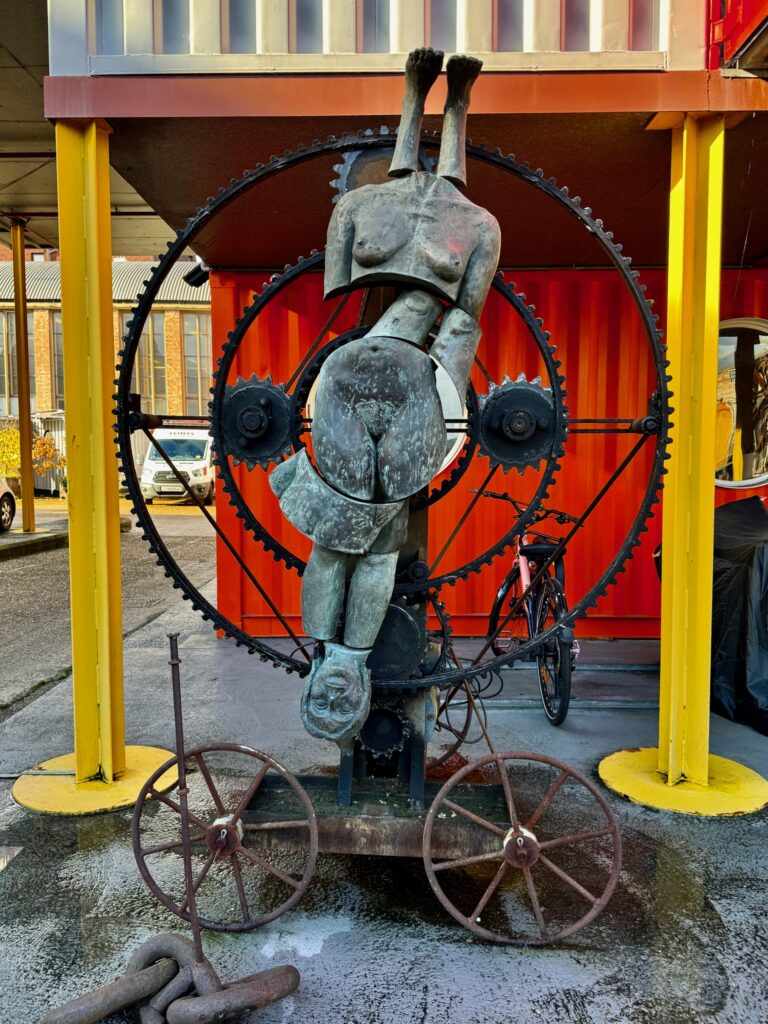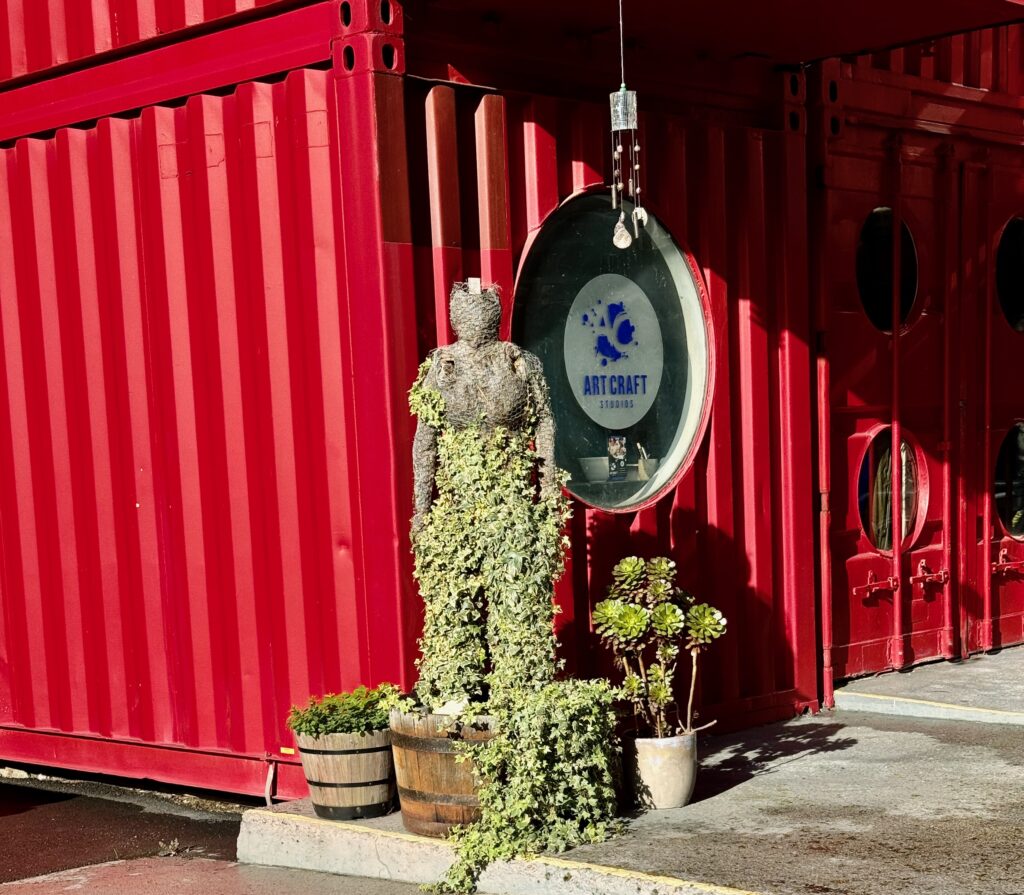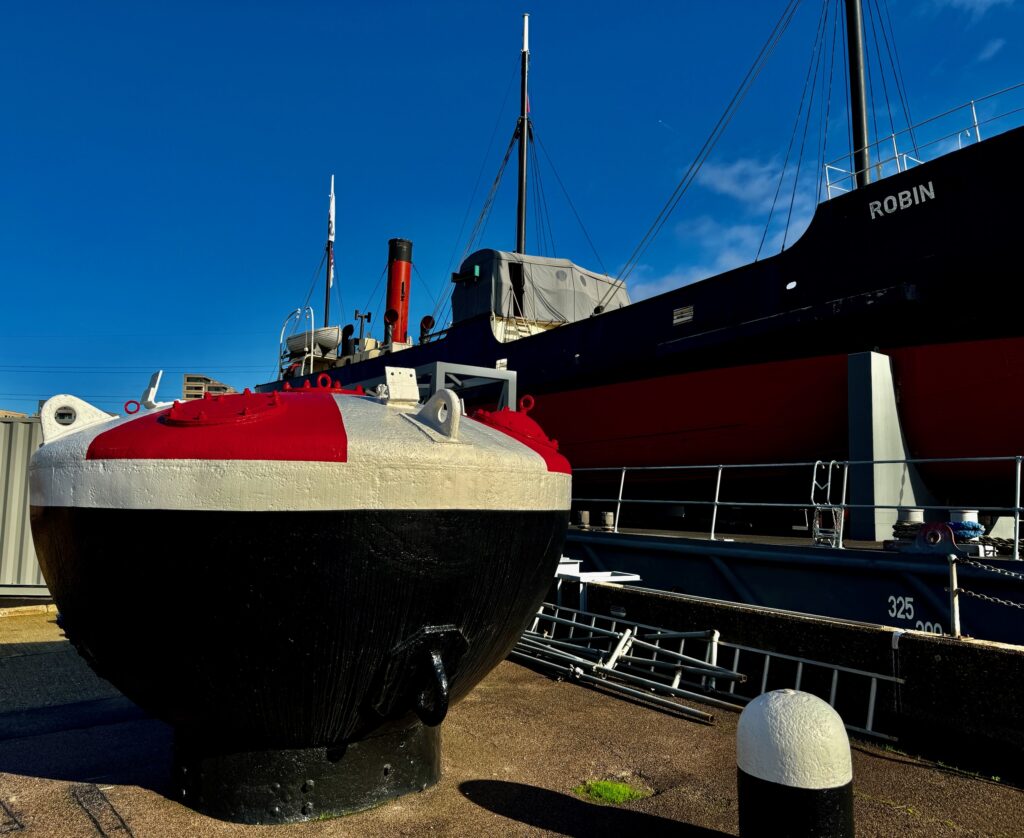I saw a giant colourful penguin outside the Blackfriar pub last week and had a quick Google last Sunday when I went for a walk. Here’s the publicity blurb: This Christmas, the Fleet Street Quarter is transforming into a winter wonderland with a magical FREE penguin parade sculpture trail in support of WWF. From Thursday 14th November, families and visitors are invited to embark on a fabulous festive adventure to discover 12 adorable penguin sculptures throughout the Quarter. Each penguin, decked out in unique festive finery designed by talented artists, will be perched in iconic spots adding a splash of Antarctic charm to the City. And each one has a QR code with lots of fun penguin facts. There’s a helpful map here.
And here are the five that I found.
Buddy the Elf outside the Blackfriar pub …

It’s penguining to look a lot like Christmas in St Bride’s Passage …
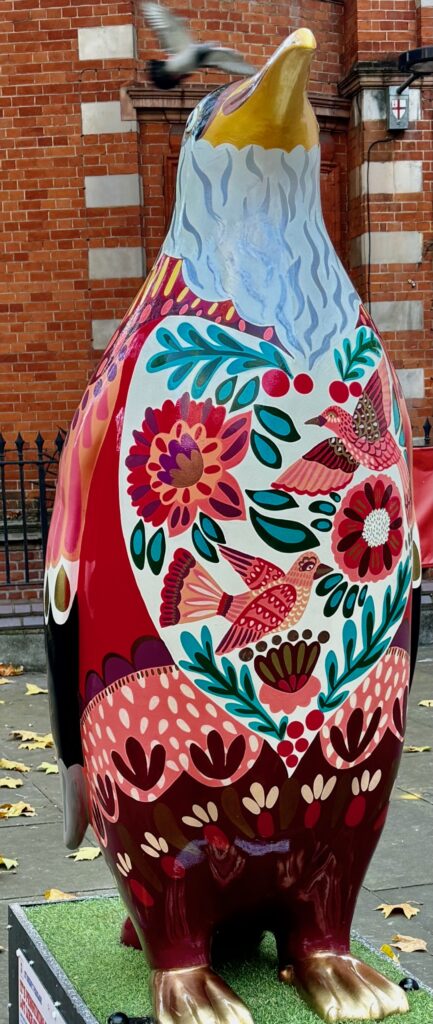
John Wilkes is unimpressed by The Forest at Christmas on Fetter Lane …

But Dr Johnson’s cat Hodge is happy to share a space with Snowy in Gough Square …
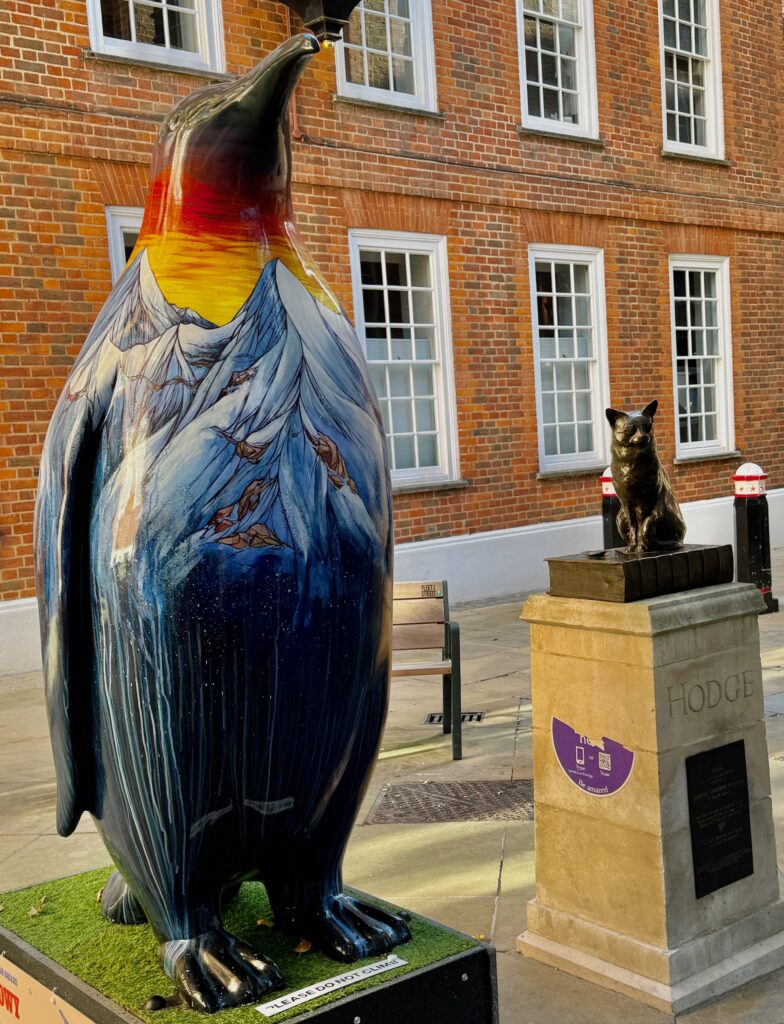
Tiffany here can be found down a little alley off Carter Lane called New Bell Yard …
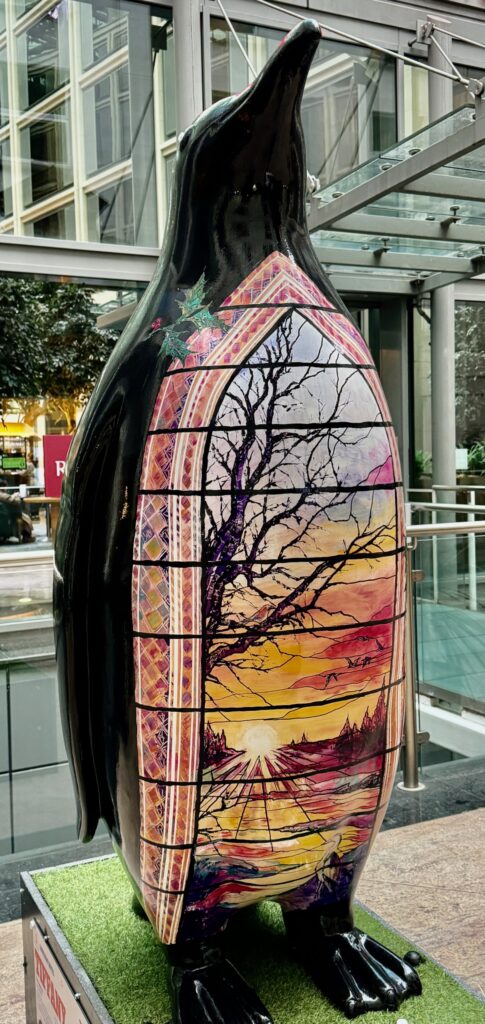
There were lots of families following the trail when I took these images.
The Steve McQueen film Blitz has just been released and you can see an interesting display of clothes from the film at the Barbican Centre …
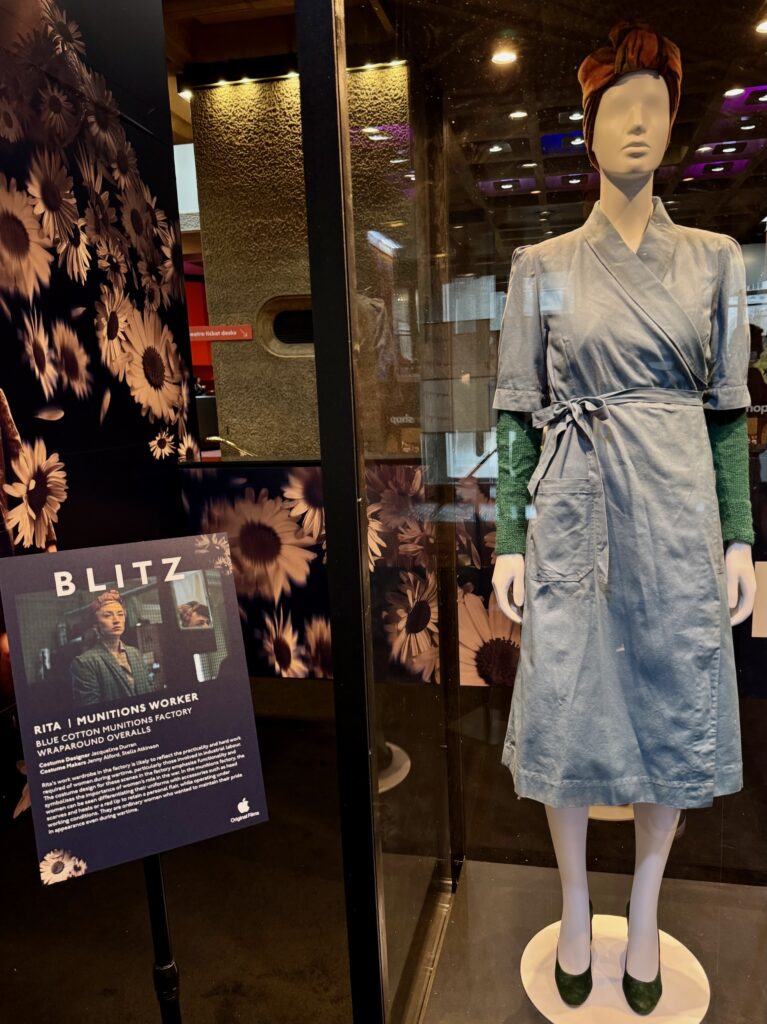

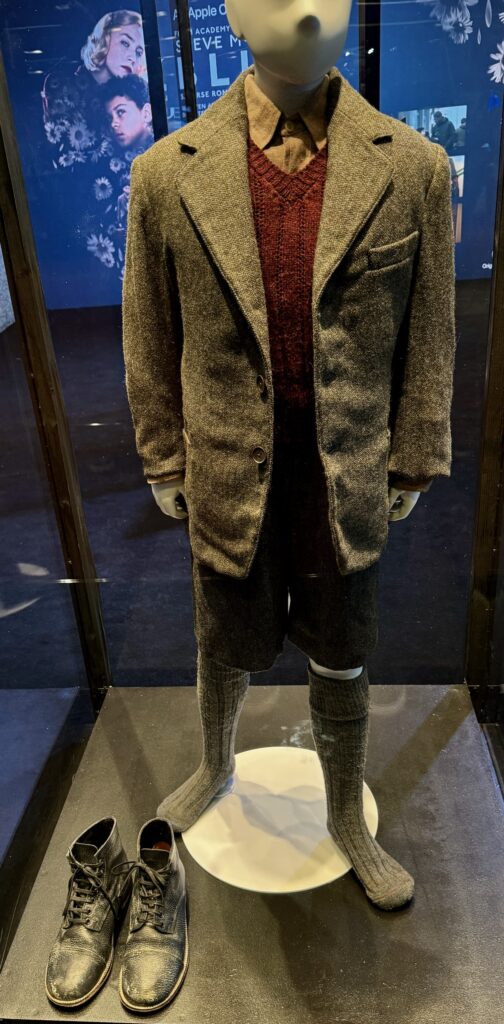
If you want to understand and explore the true, full story of Londoners and the Blitz I strongly recommend Jerry White’s book The Battle of London 1939-45.
Whilst on the subject of the Blitz, I recently walked past The National Firefighters Memorial on Peter’s Hill opposite the Tower of London where I often pause. It’s interesting to note the special plaque commemorating the 23 women members of the Auxiliary Fire Service who gave their lives protecting London and its inhabitants during the bombing …
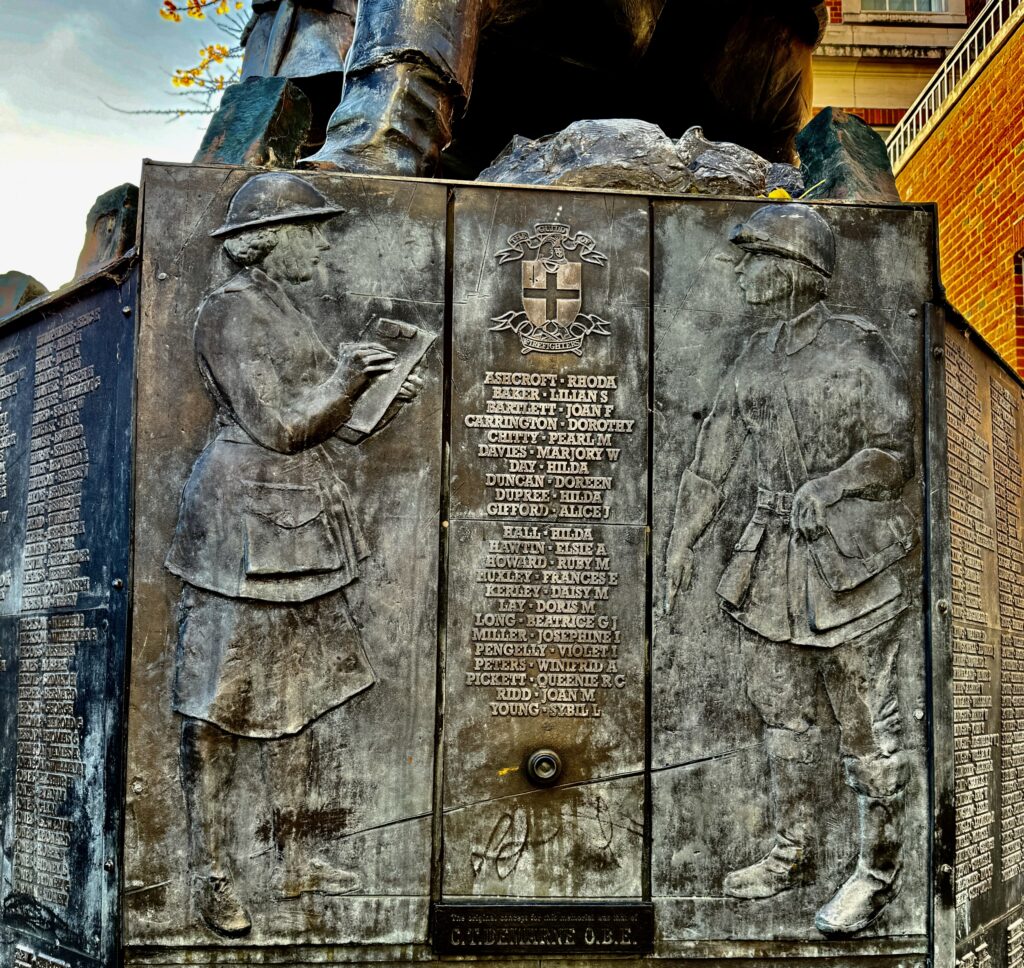
The lady on the left is an incident recorder and the one on the right a despatch rider.
On the wall of the Leonardo Royal Hotel that fronts Carter Lane is this rather unusual plaque …
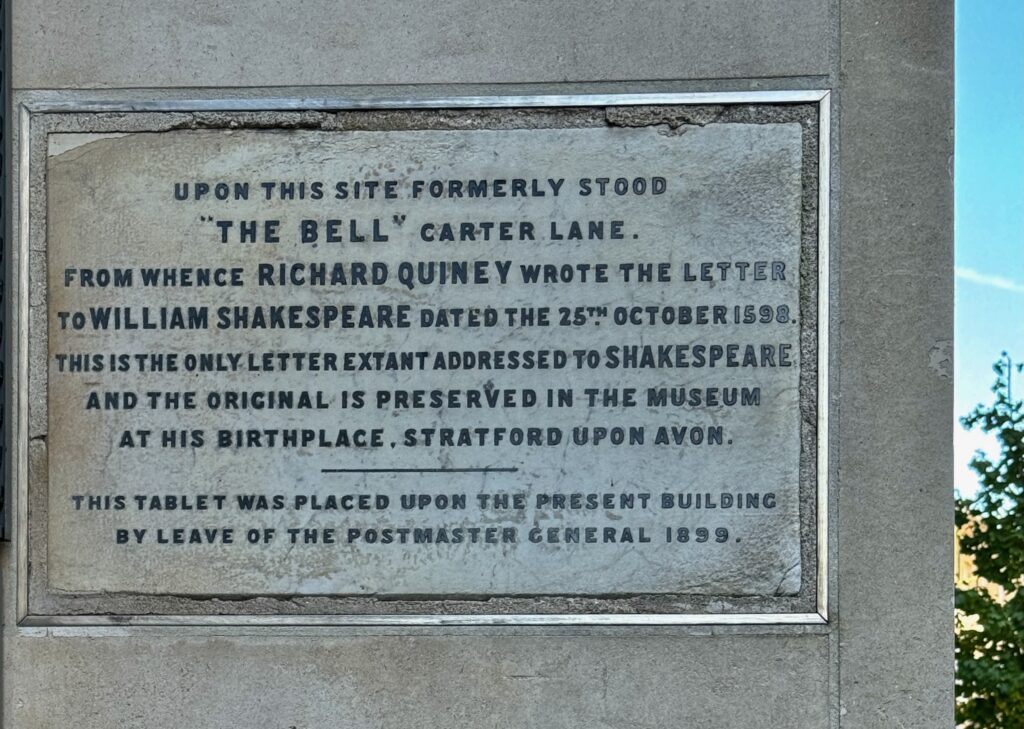
The Bell was demolished at the end of the 19th century to make way for the Post Office Savings Bank building referenced in the plaque by the mention of the Postmaster General. The Post Office building itself was demolished in the 1990s to make way for the hotel but the original late 19th century door surround to the Post Office building has been retained in New Bell Yard (right beside Tiffany, see above) …

You can see the letter the plaque refers to here.
A statue commemorating the poet John Keats has appeared just south of the entrance to Moorgate Station. It was sculpted by Martin Jennings and depicts a larger than life-size copy of a life mask of Keats taken aged 21. Keats was the son of an ostler at a nearby inn called The Swan and Hoop …
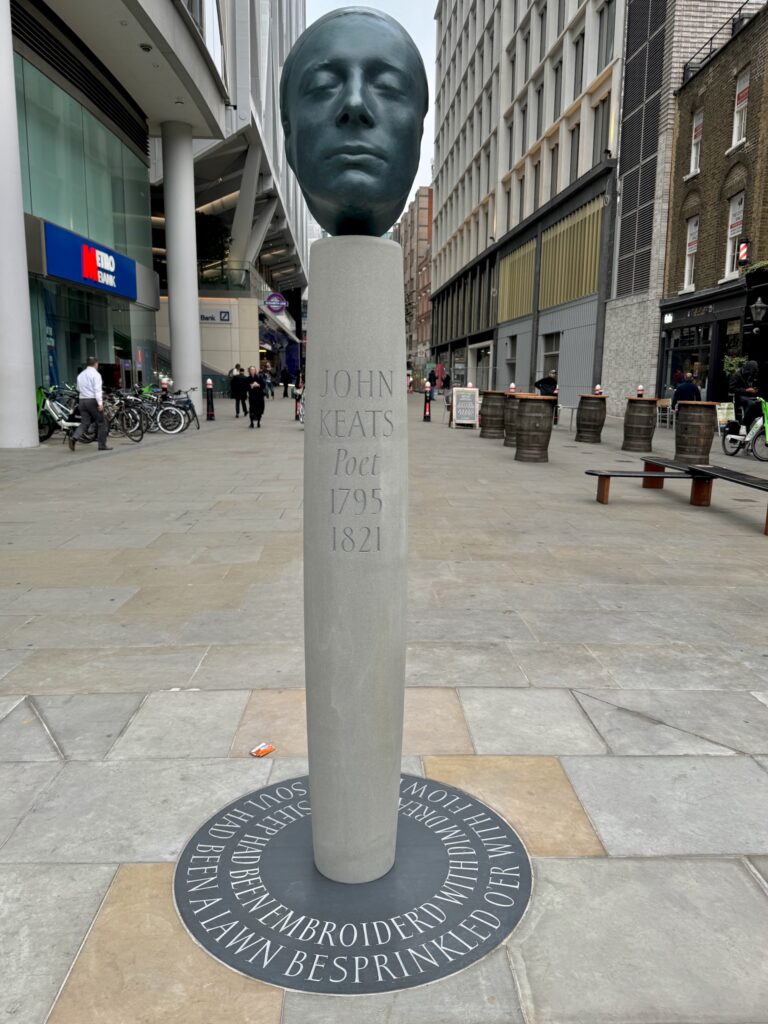
The bronze is mounted on a plinth above a slate base inscribed with words from Keats’ Ode on Indolence.
Thought I’d grab an image of this classic view from Fleet Street whilst the sun was out. Looking from the left you see 22 Bishopsgate, the Cheesegrater, the spires of St Mary-le-Bow and St Martin Ludgate and the dome of St Paul’s Cathedral …
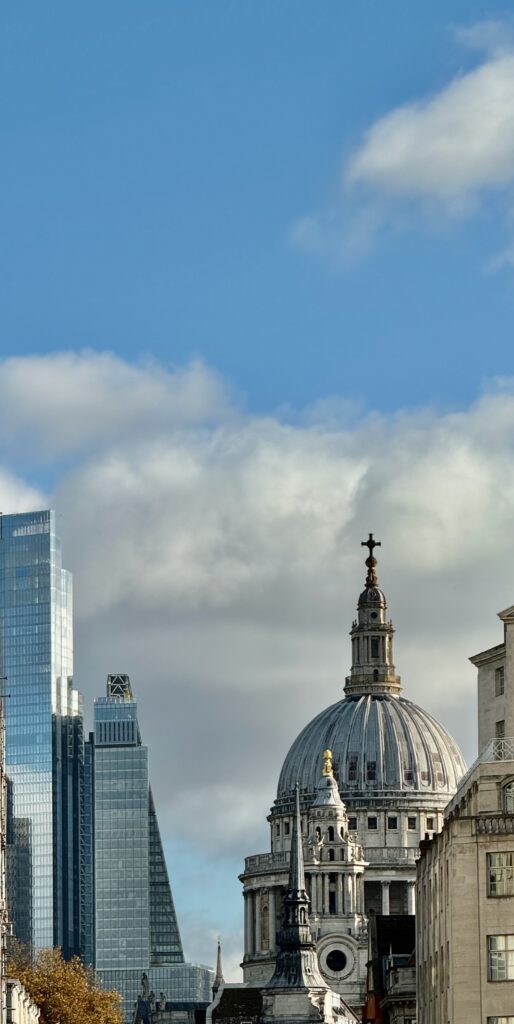
Christmas light installations are beginning to appear …

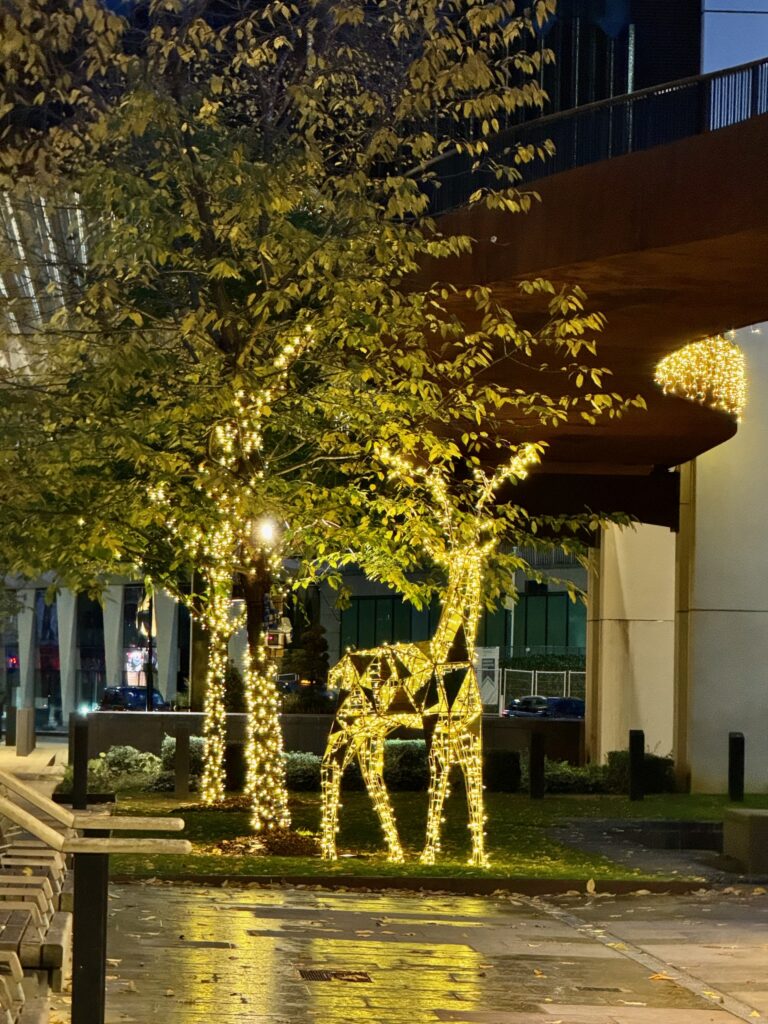
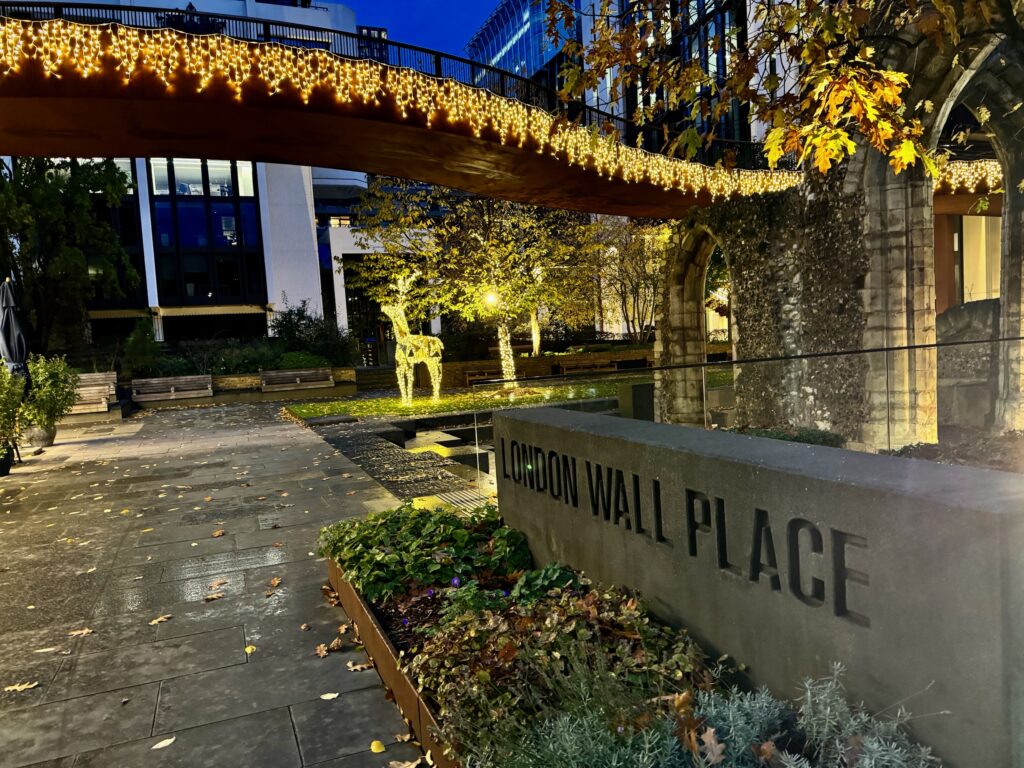
Framed by the medieval remains of St Elsyng Spital …
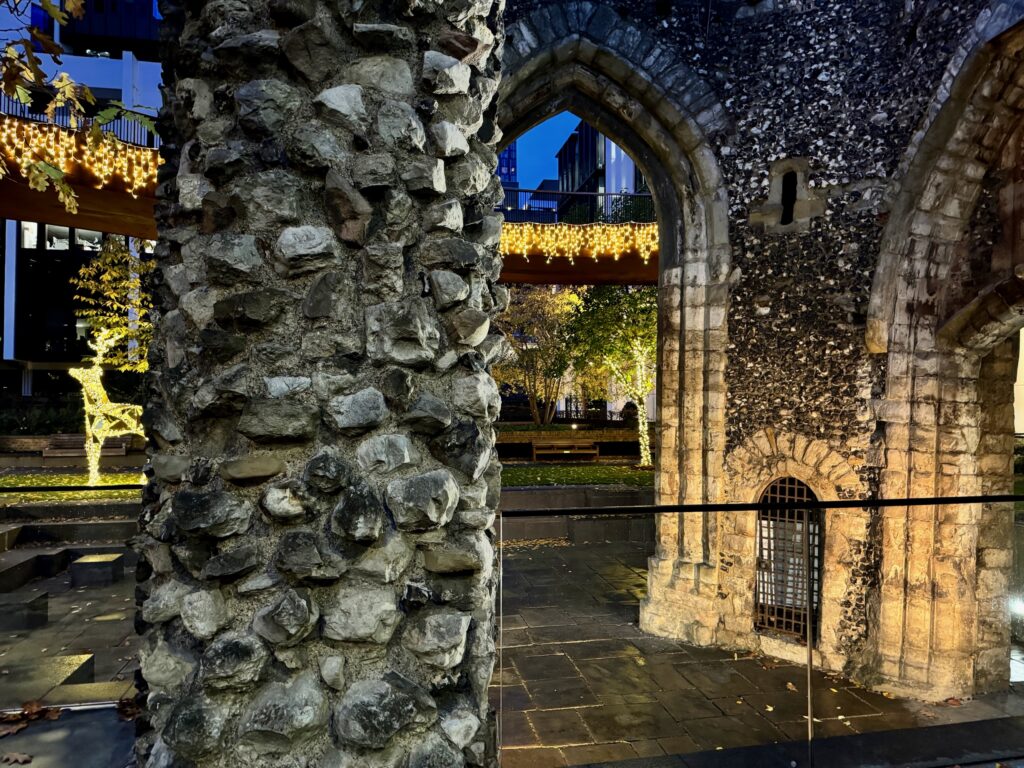
Interactive Trumpet Flowers at City Point …
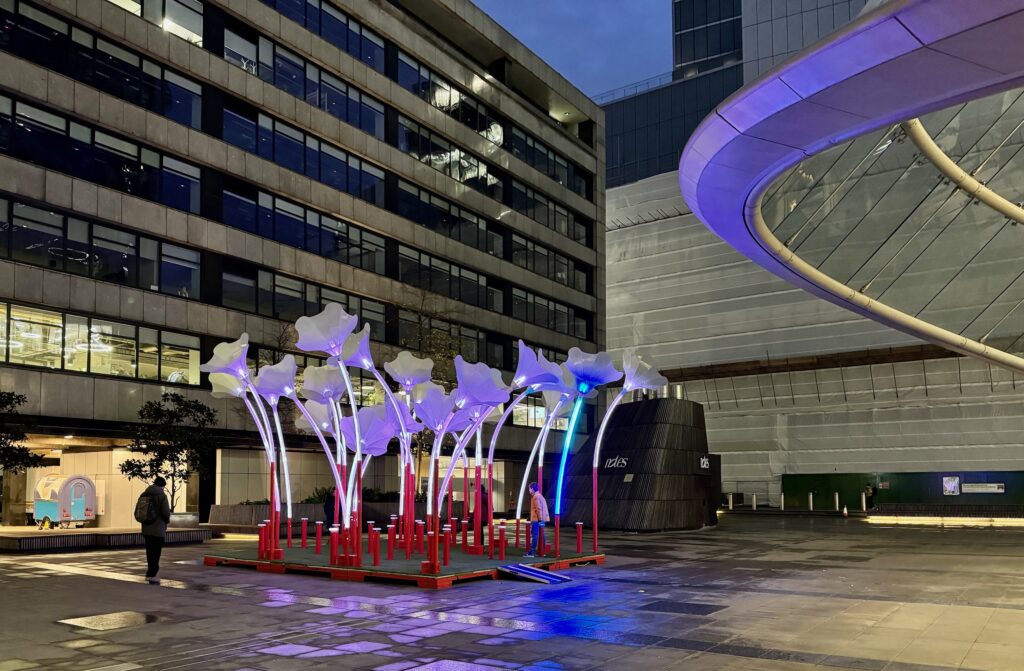
Press the ‘buttons’ and the lights change colour as music plays …

Not surprisingly, children seem to love it!
City Point offices get in on the act …
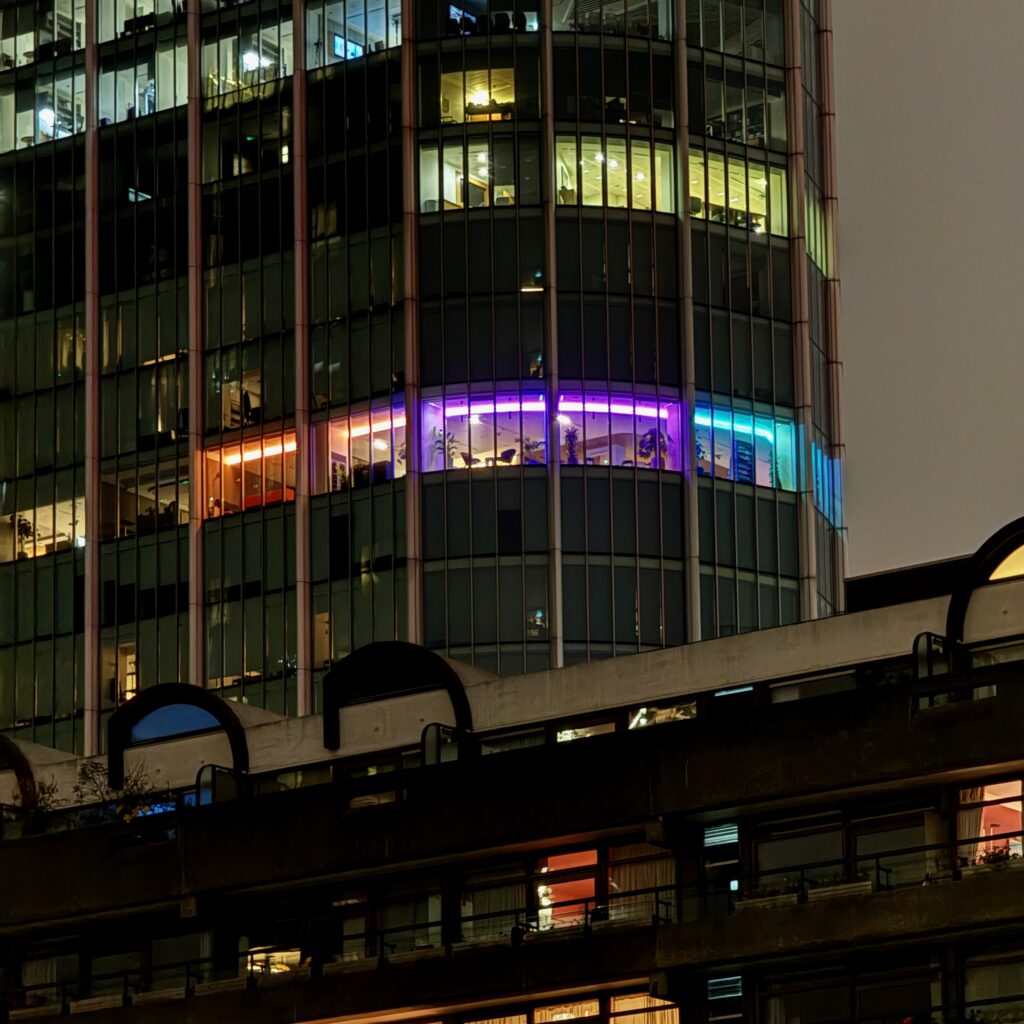
Sadly, I couldn’t resist photographing my Yuzu Grand Macaron dessert at Côte Barbican …

An image from outside the City I’d like to share with you. This is on Finchley Road, about 10 minutes walk from the Underground station …
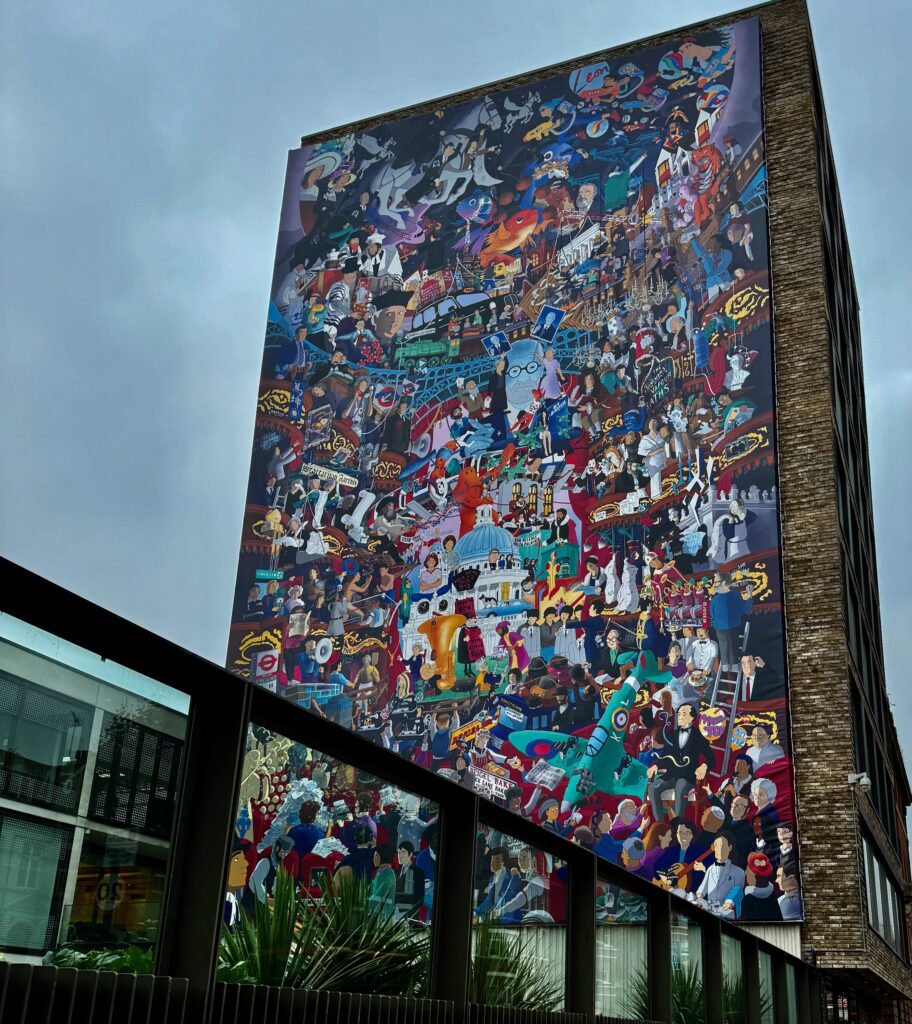
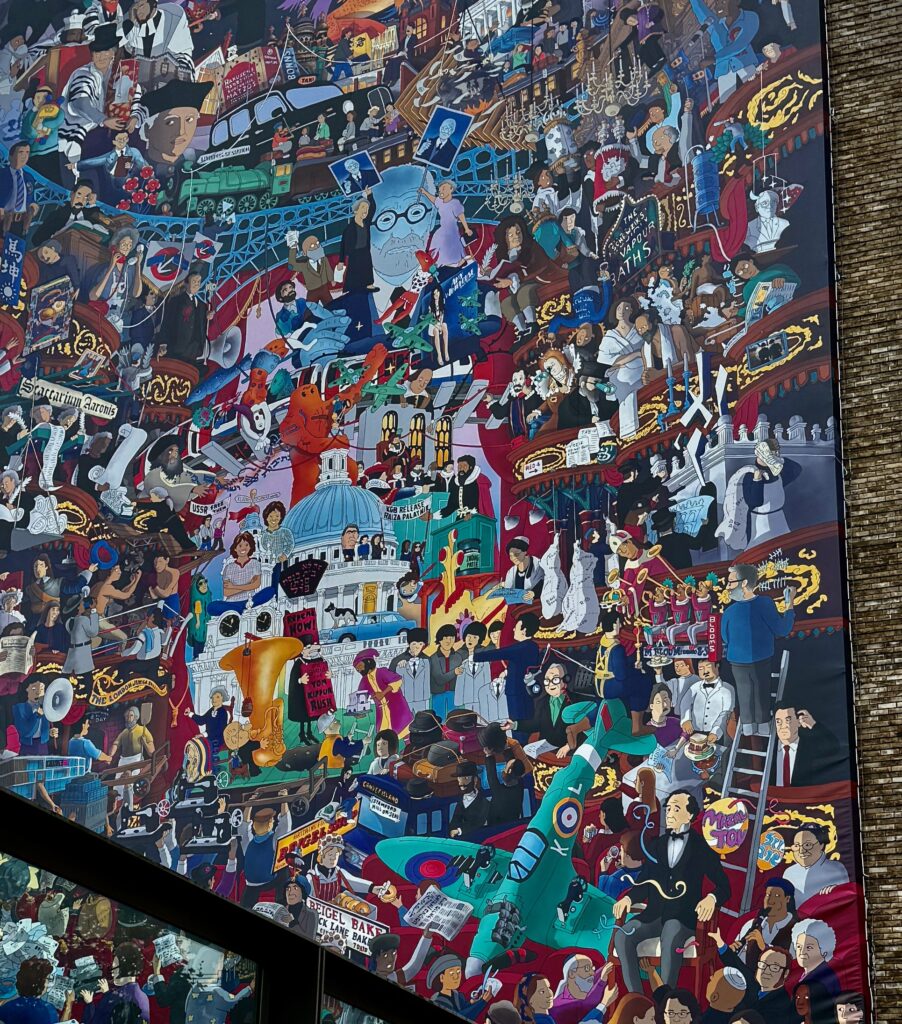
Definitely worth seeking out if you find yourself in that part of the world. I must have stared at it for a full 15 minutes. Read its story here in the excellent Londonist website.
A couple of super sunsets. I haven’t edited these images in any way so the colours are authentic …
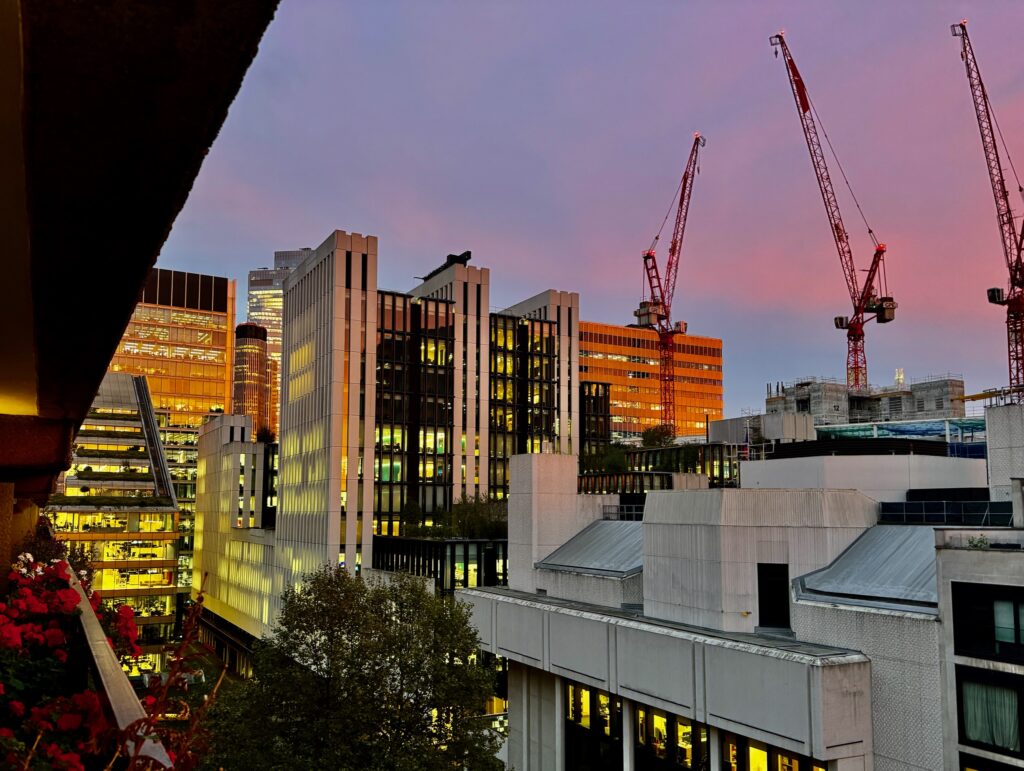
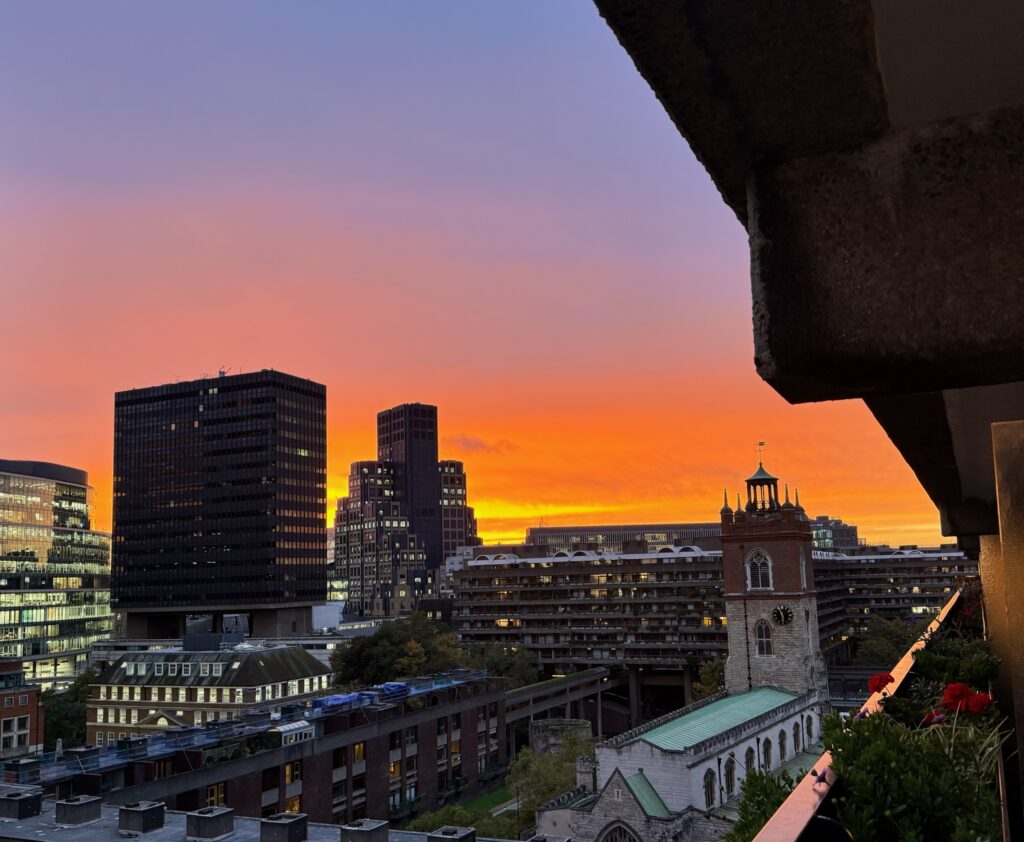
And finally, the wonderful City gardeners are replanting the bed on Silk Street and I shall be tracking its progress over the coming months …
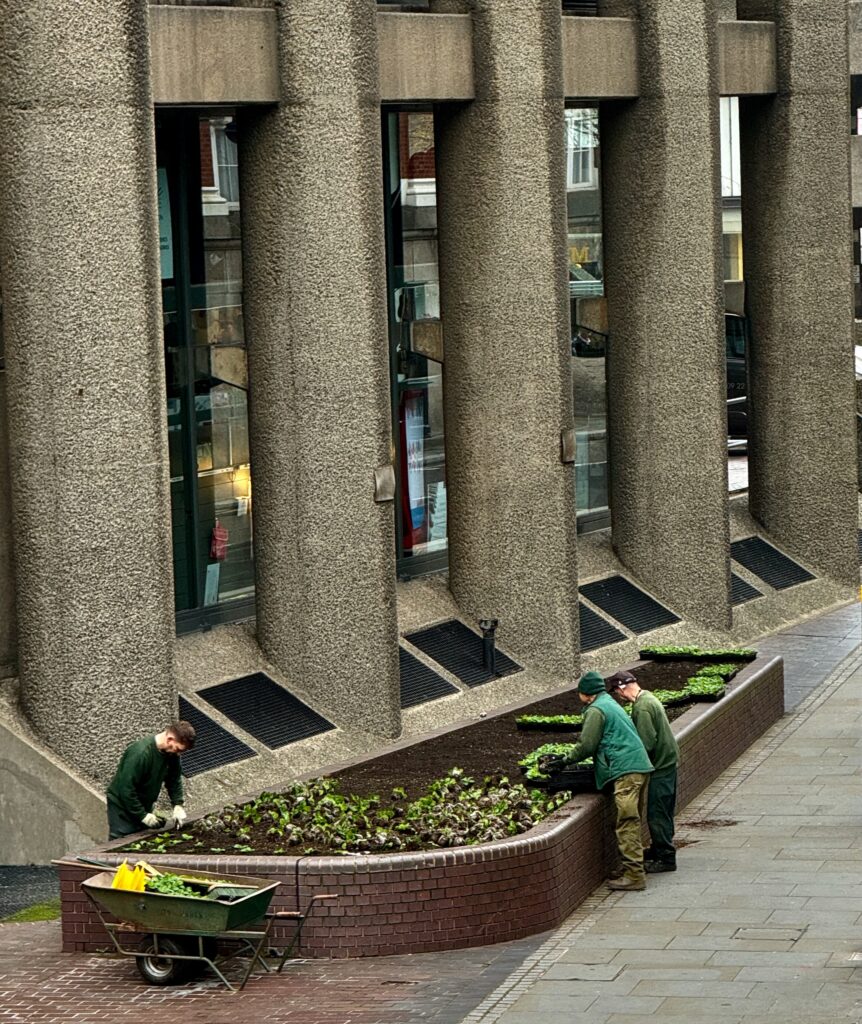
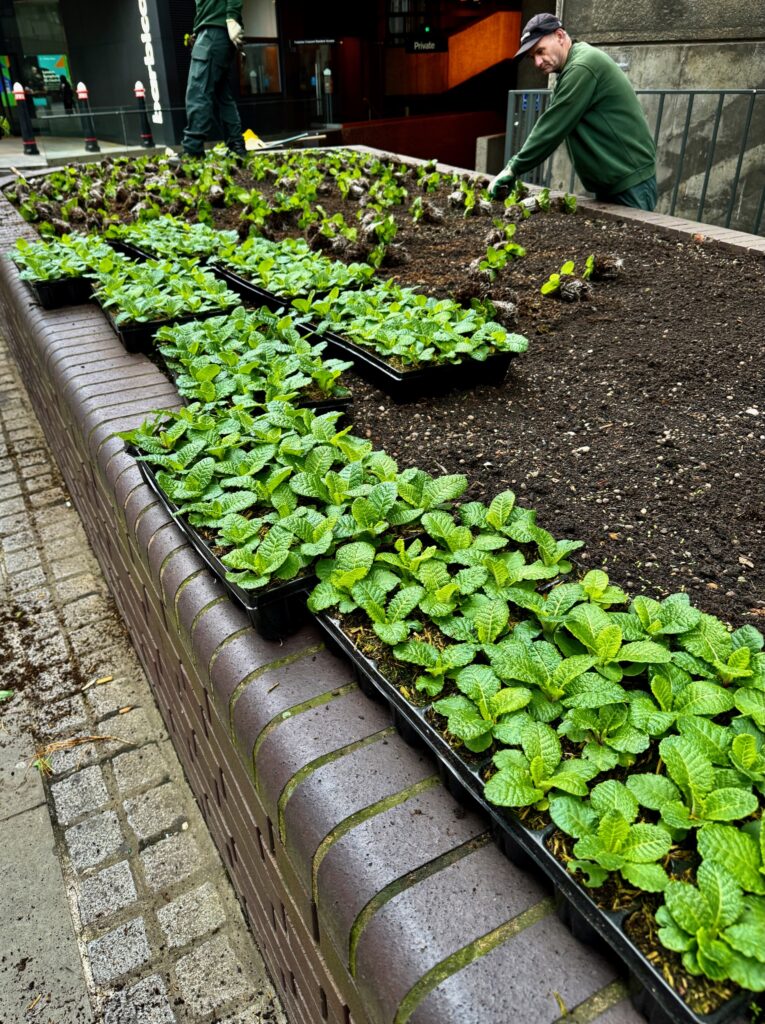
If you would like to follow me on Instagram here is the link …

